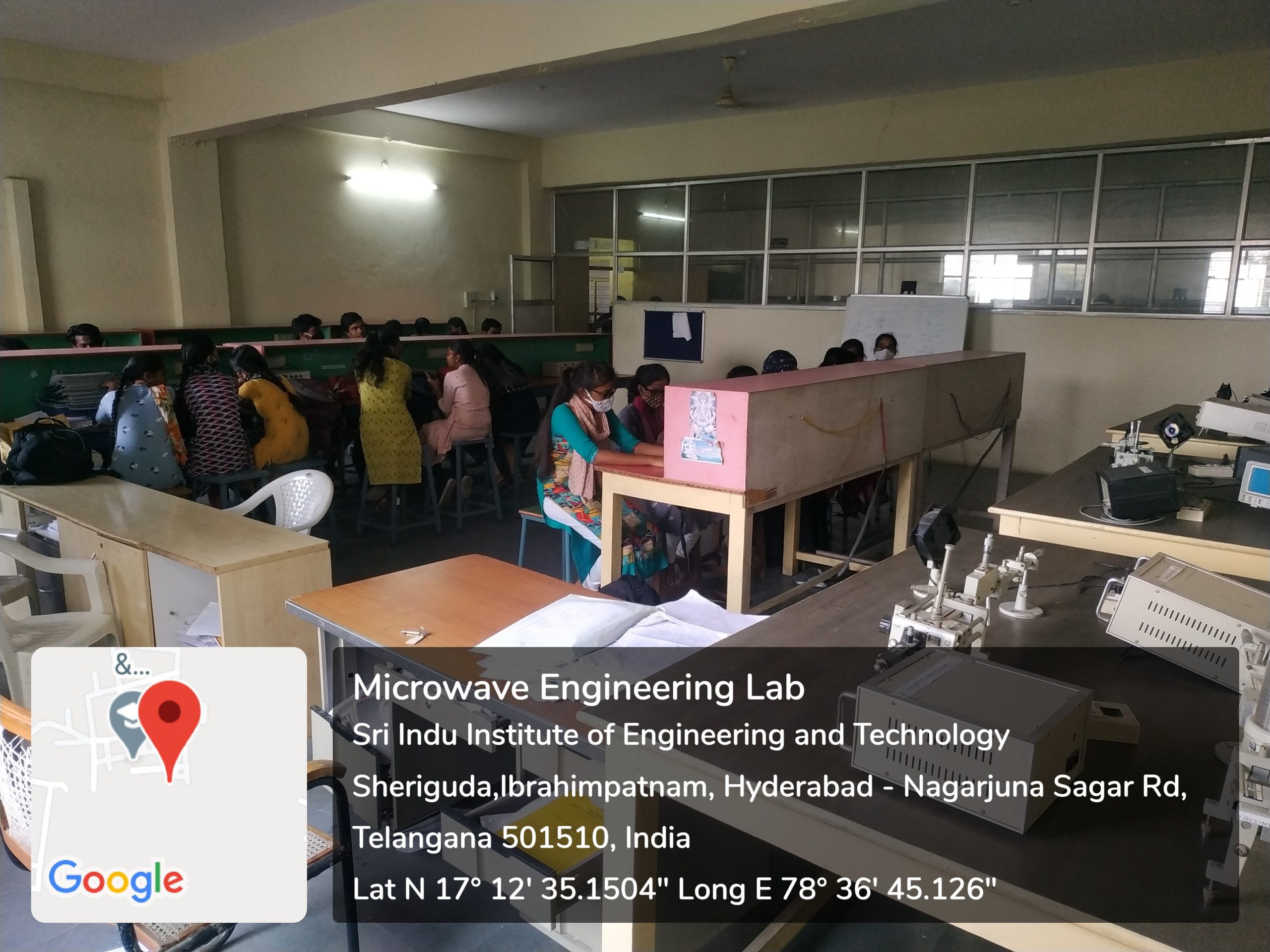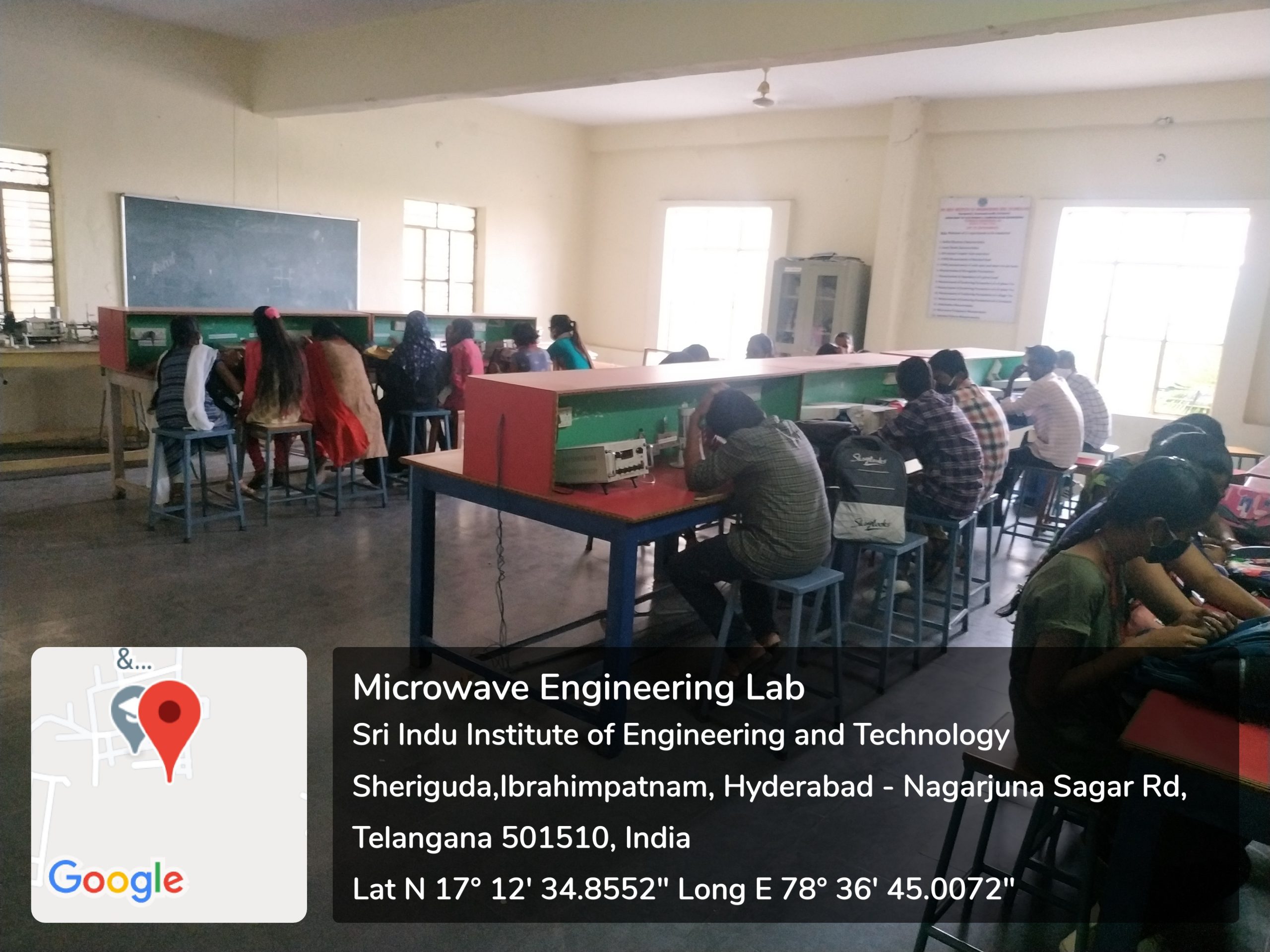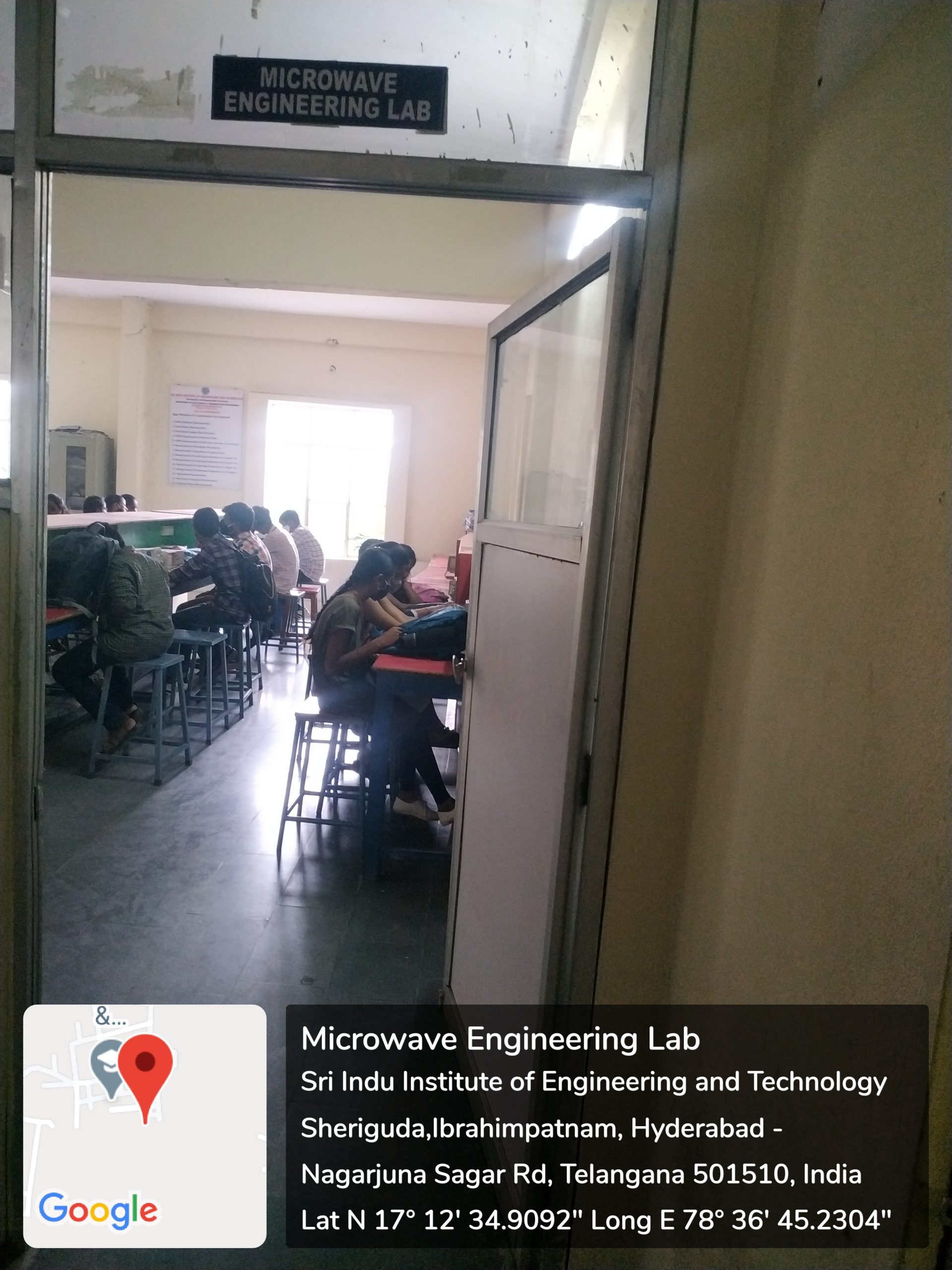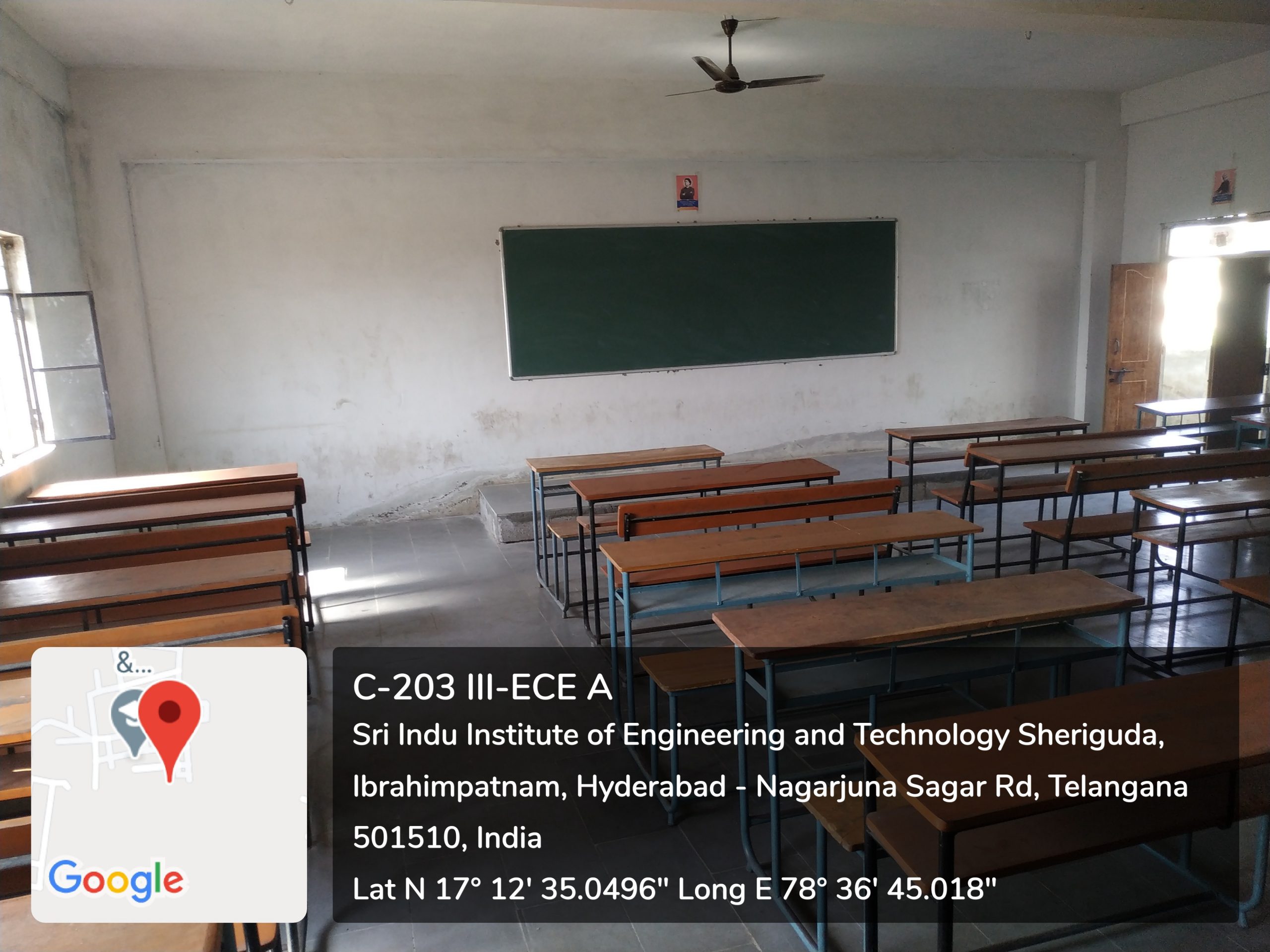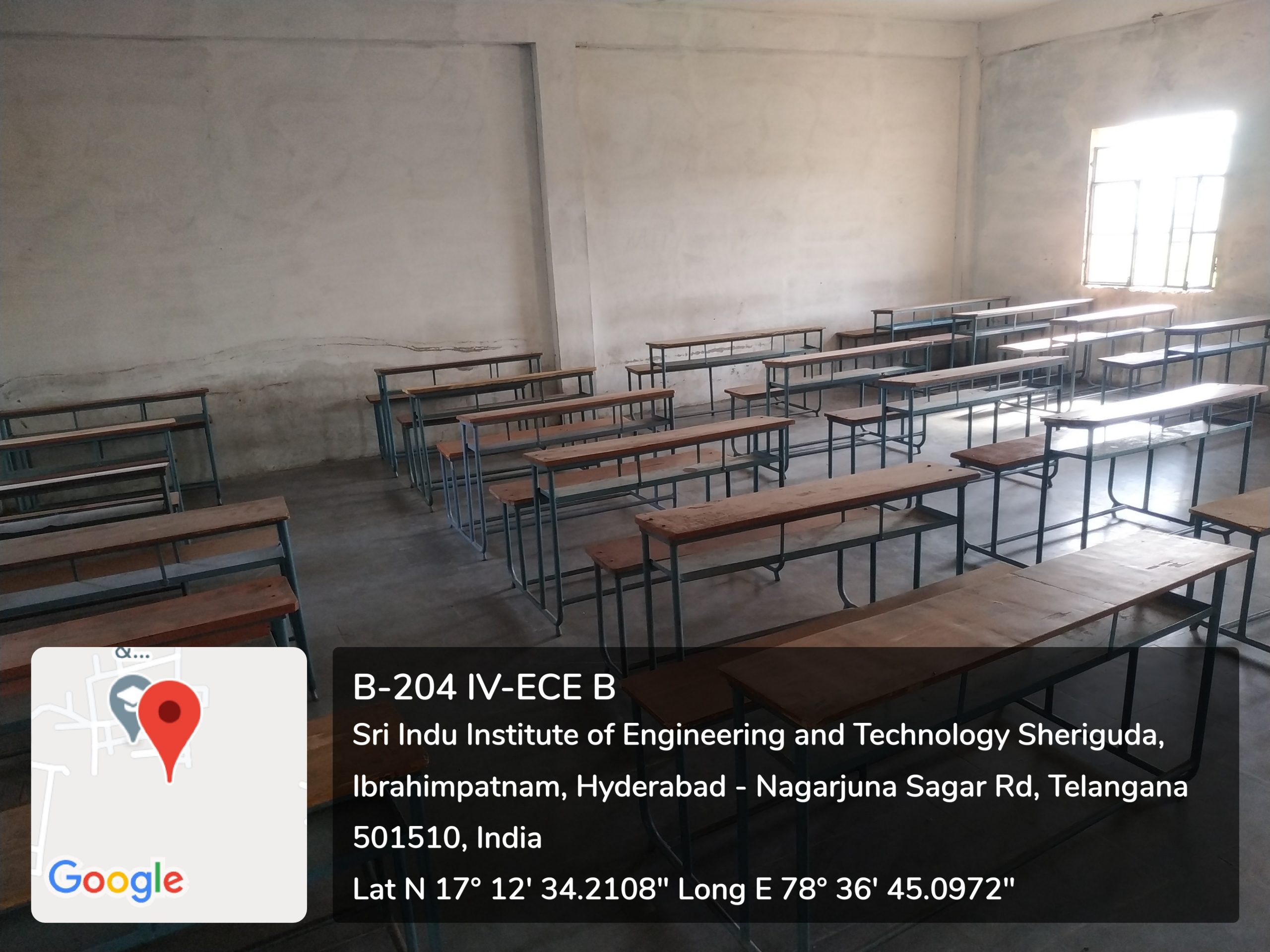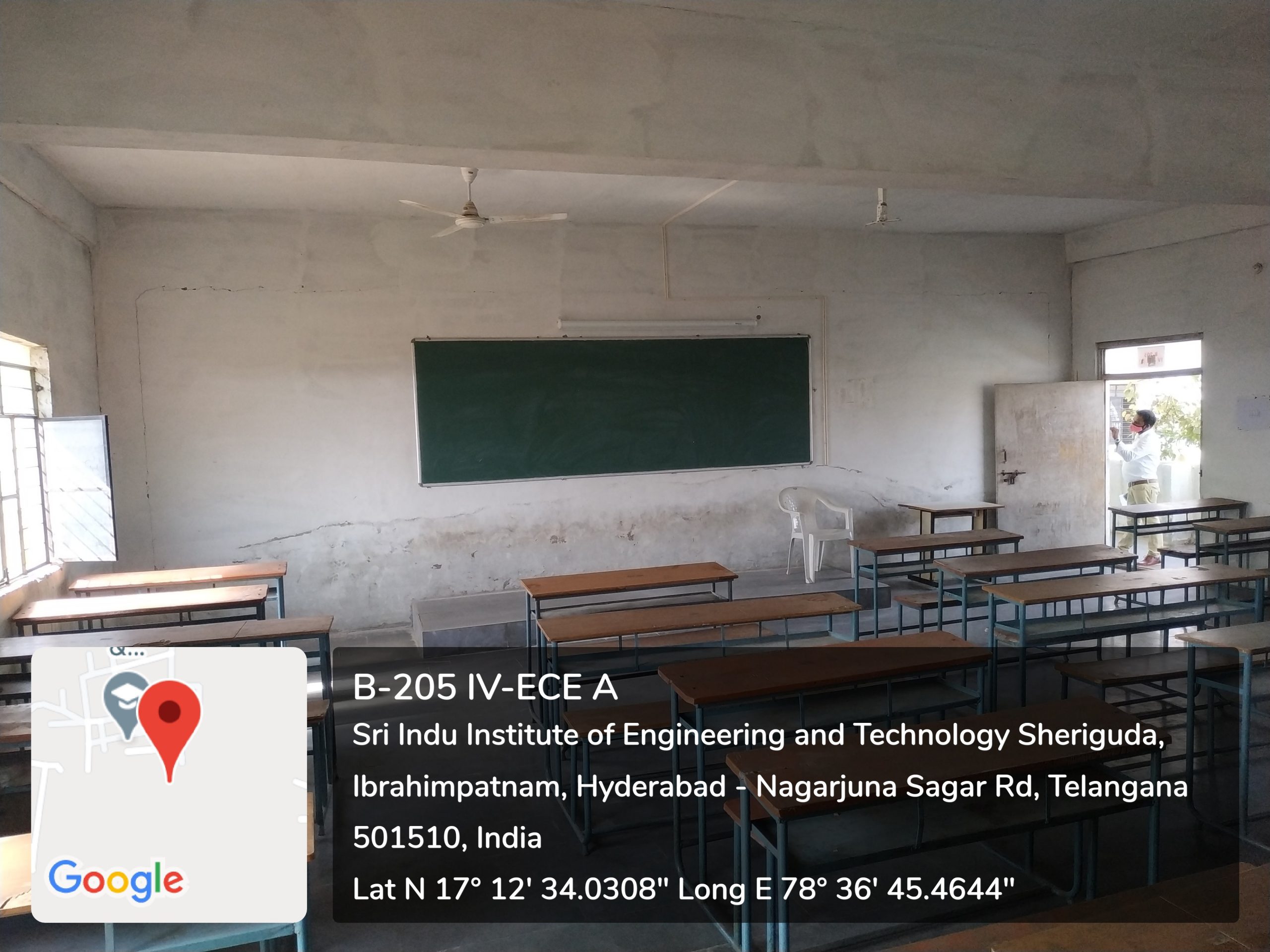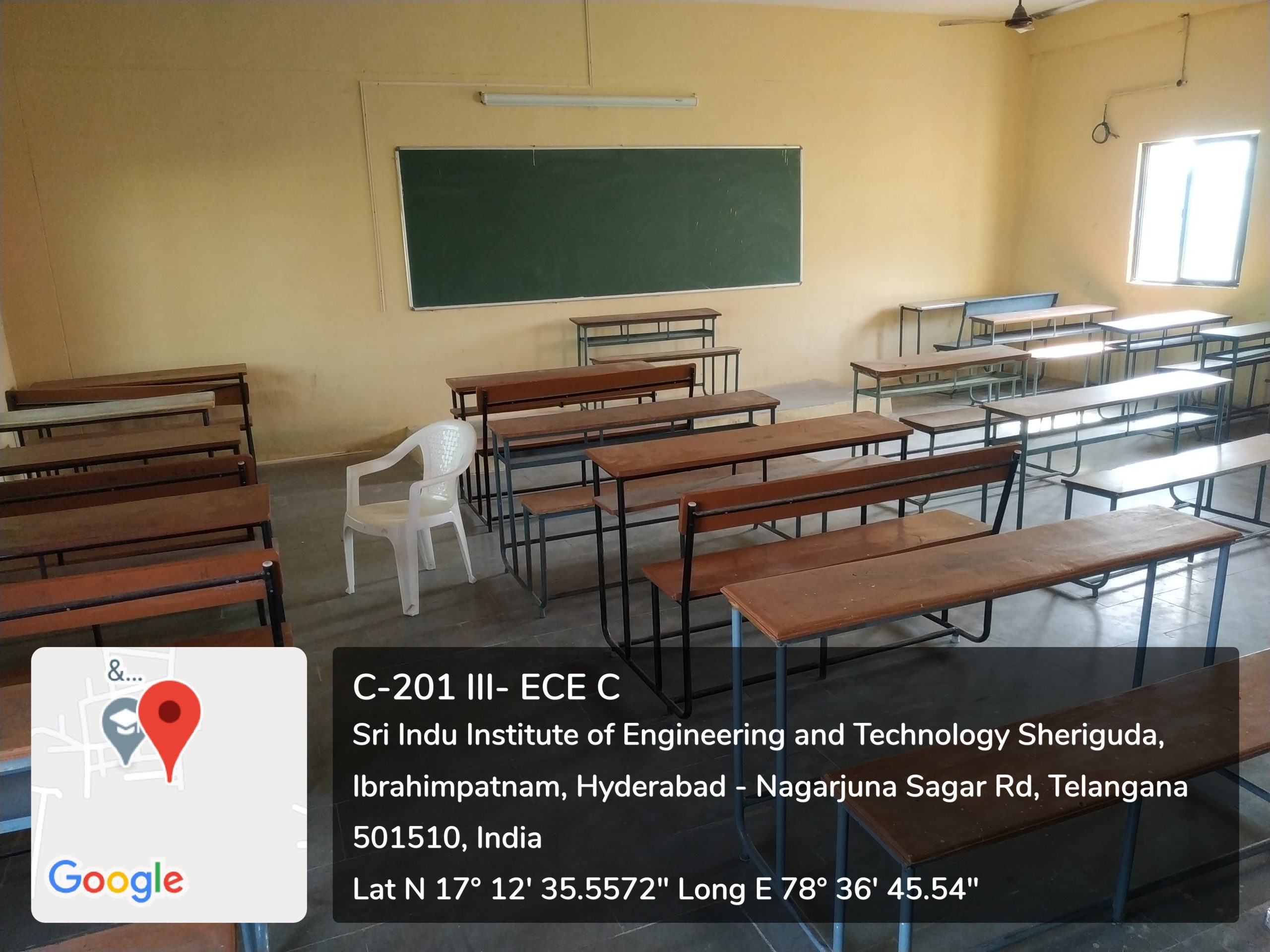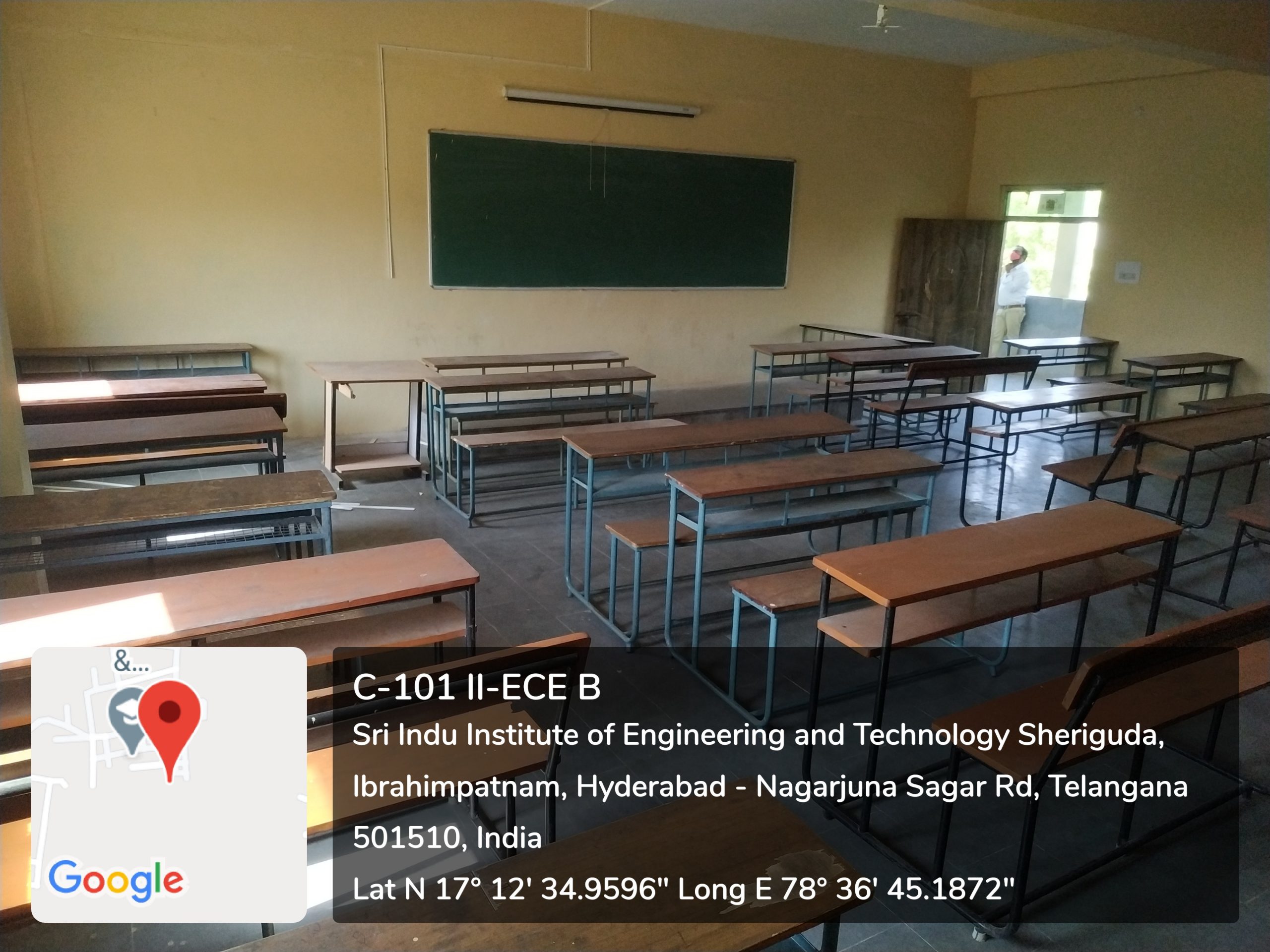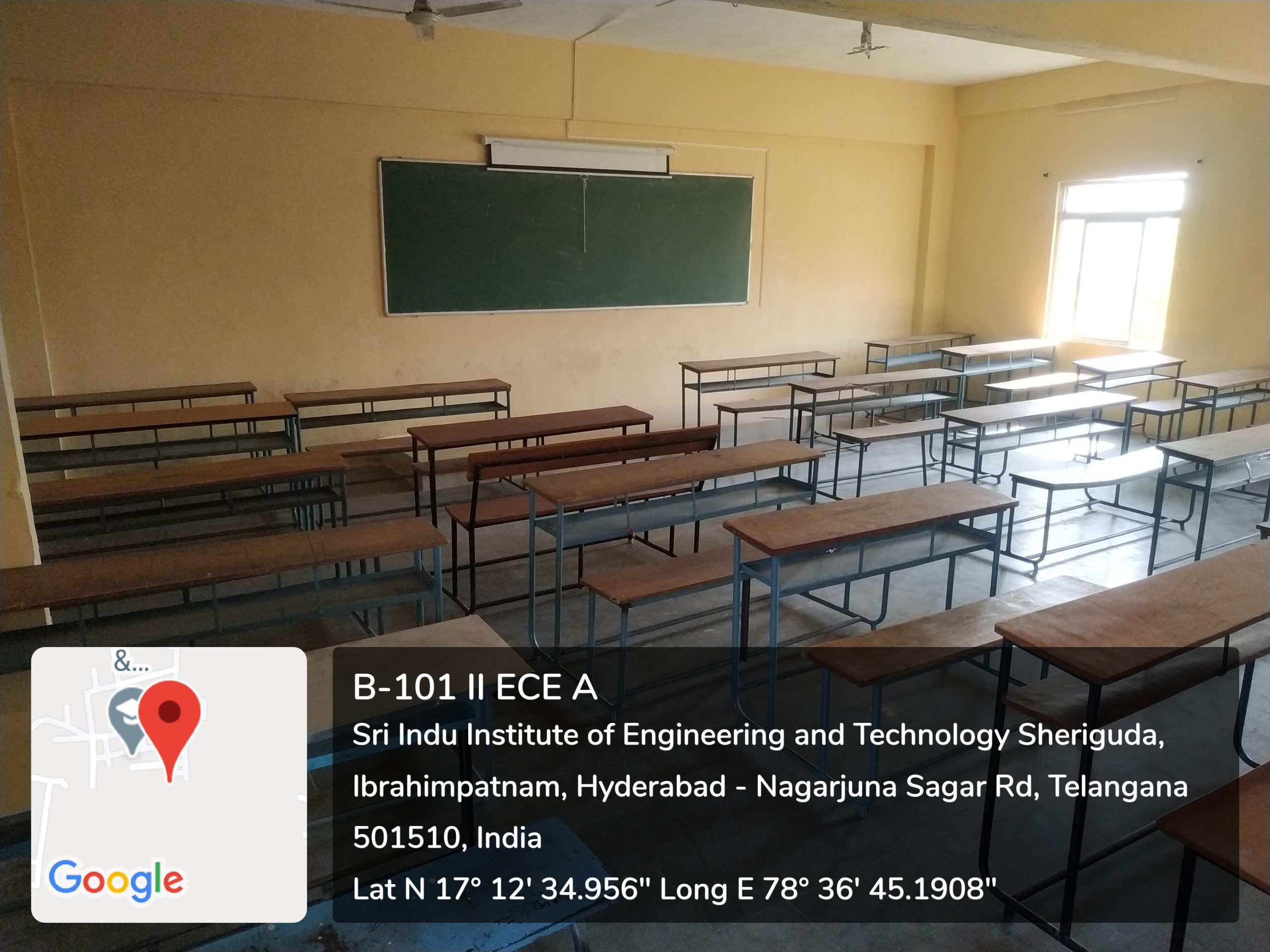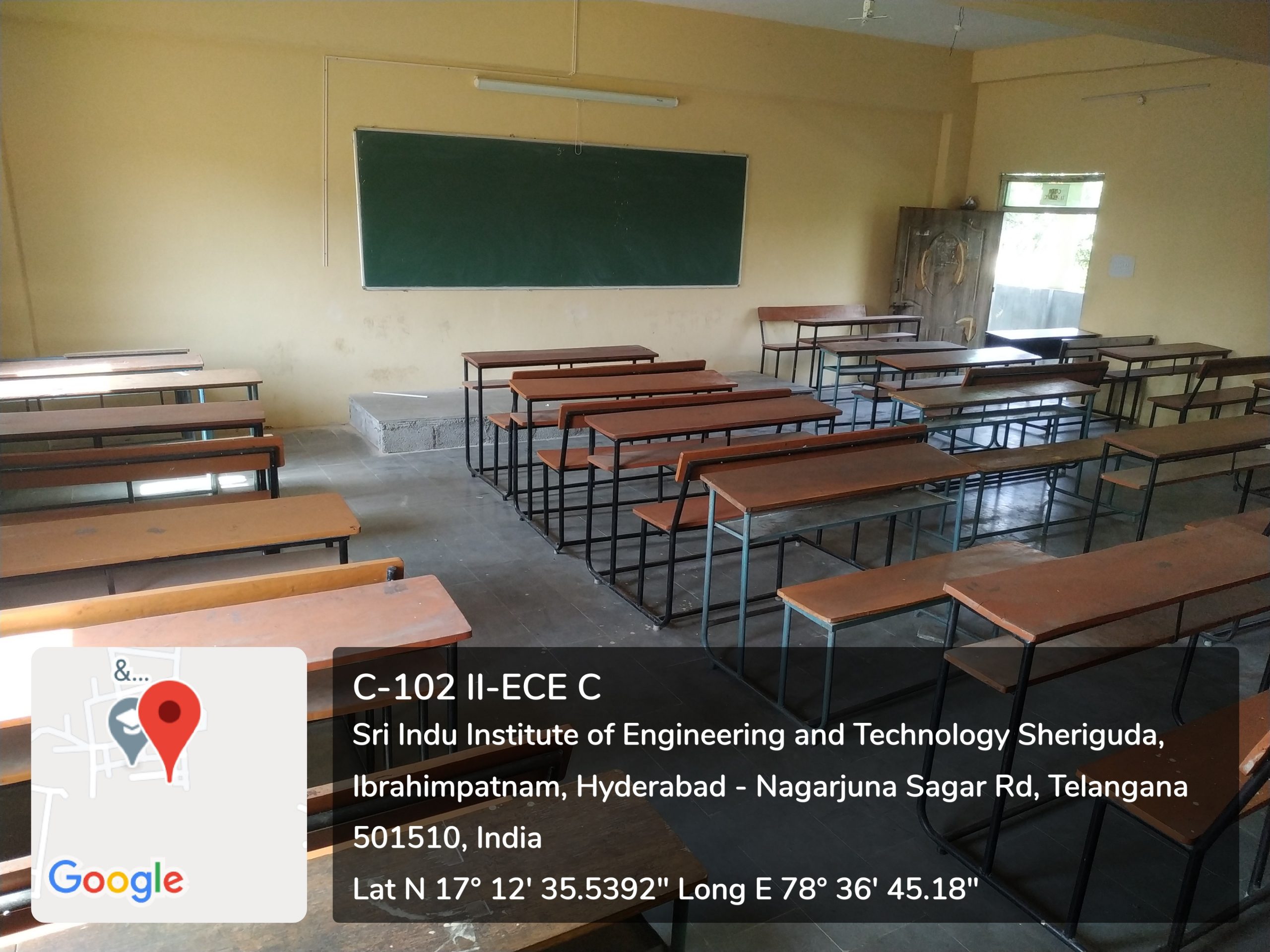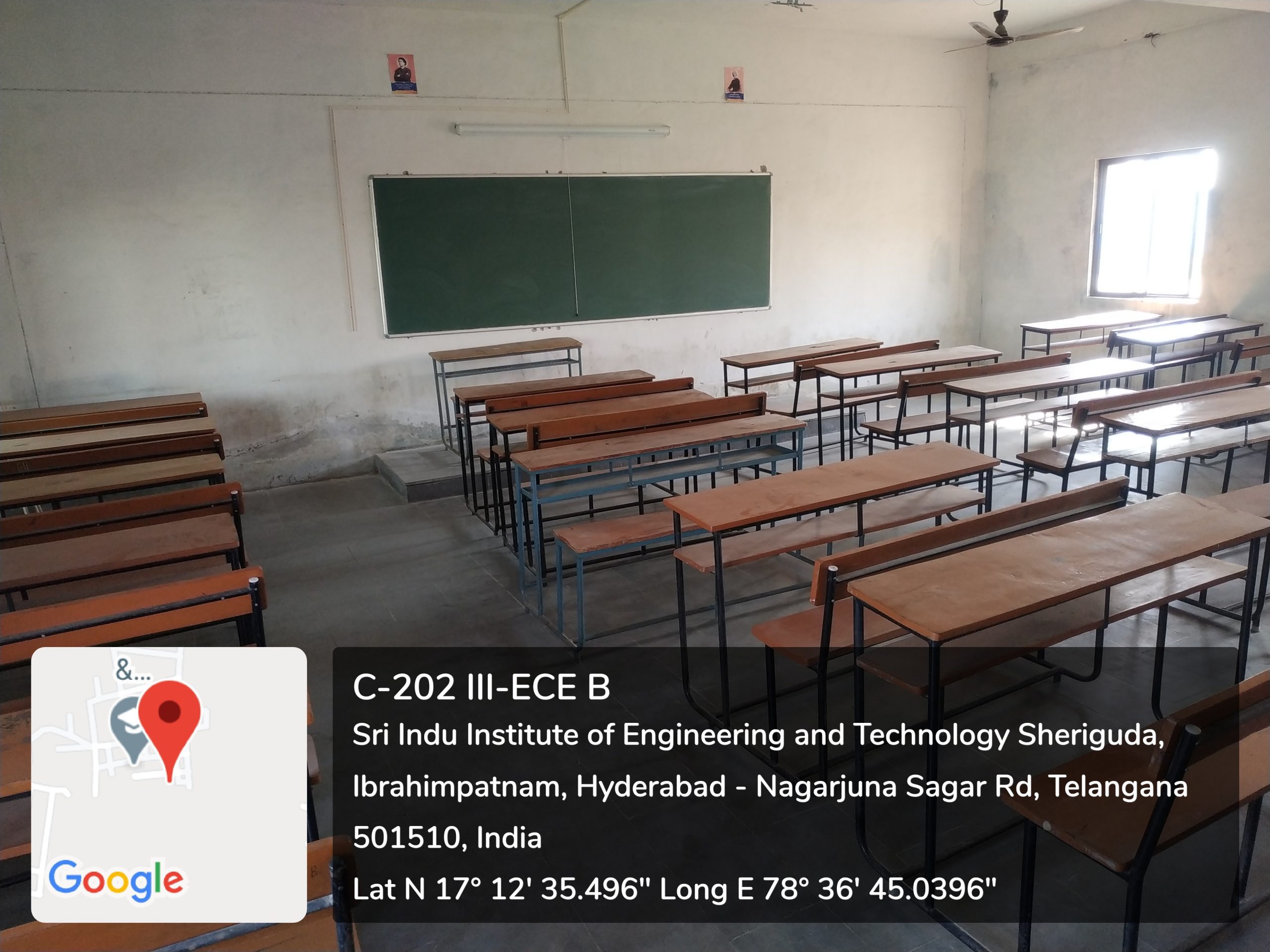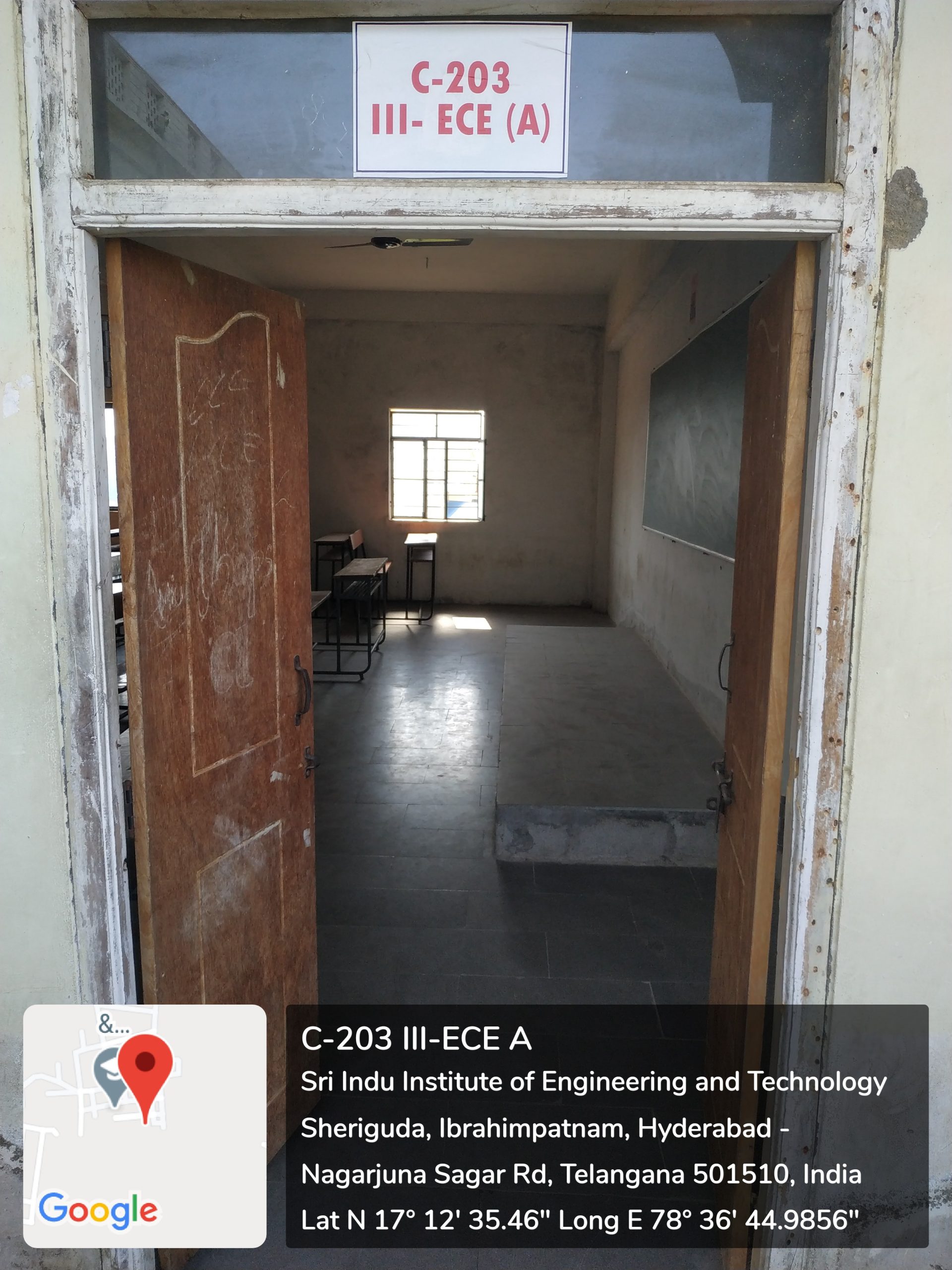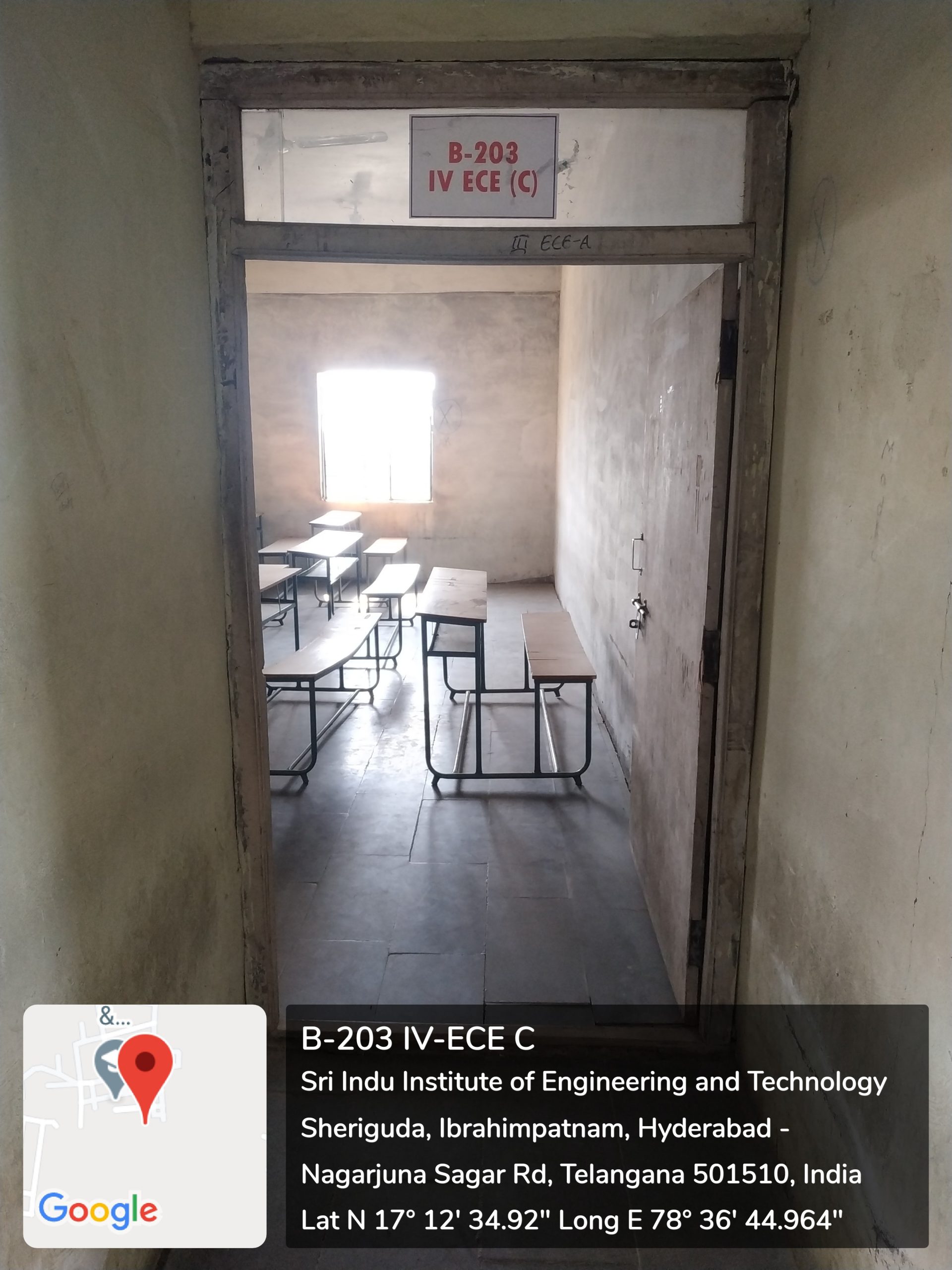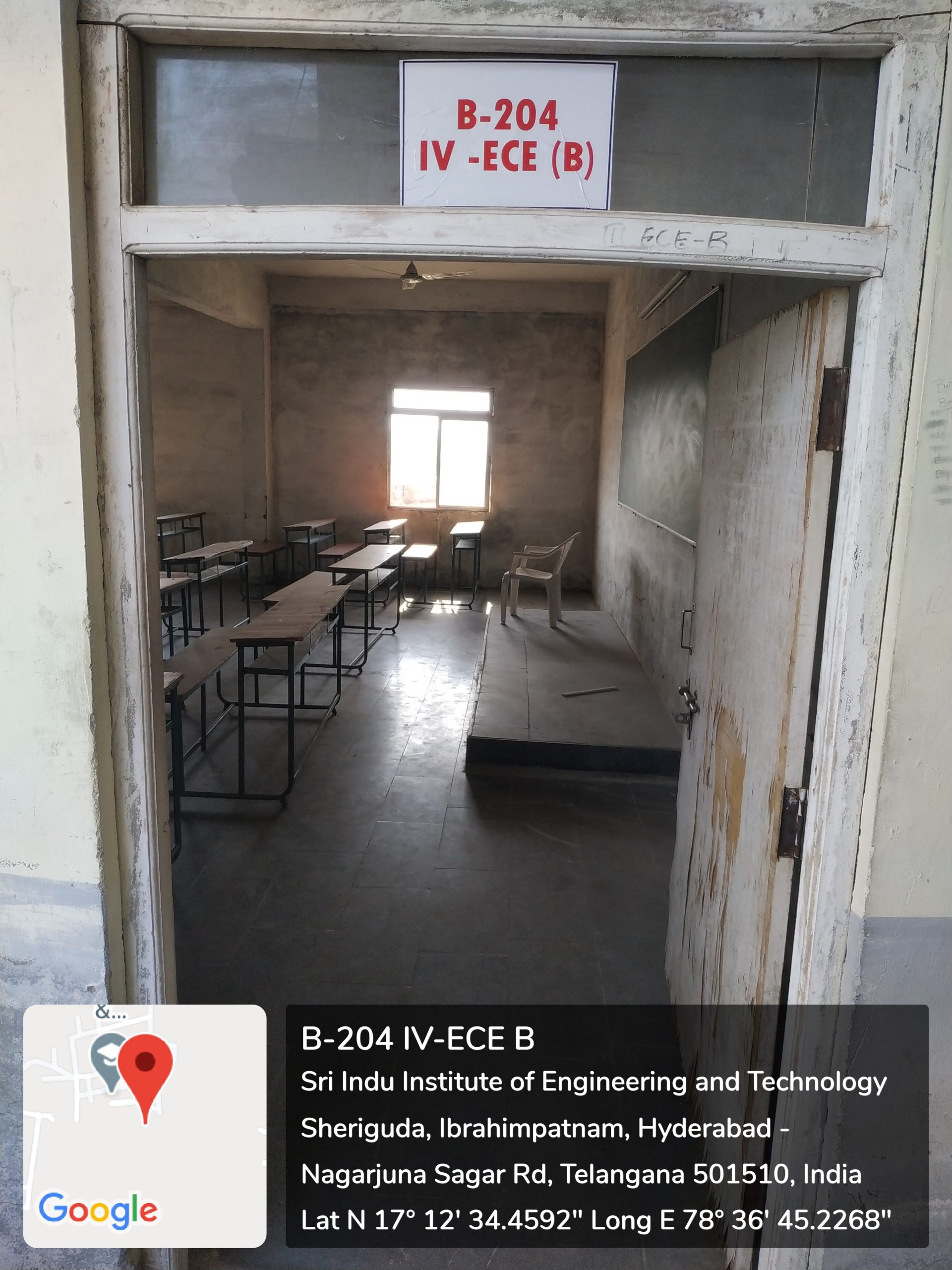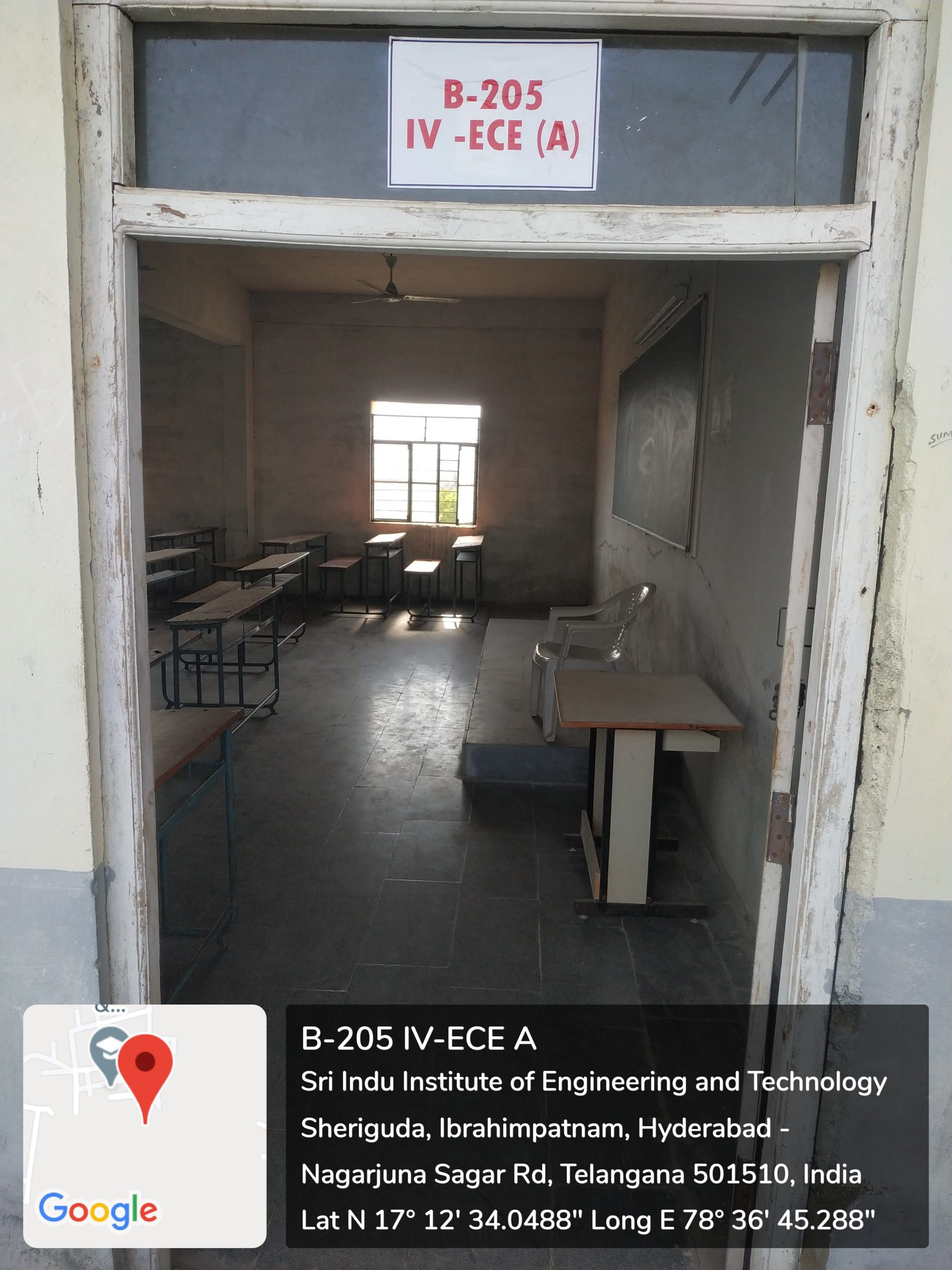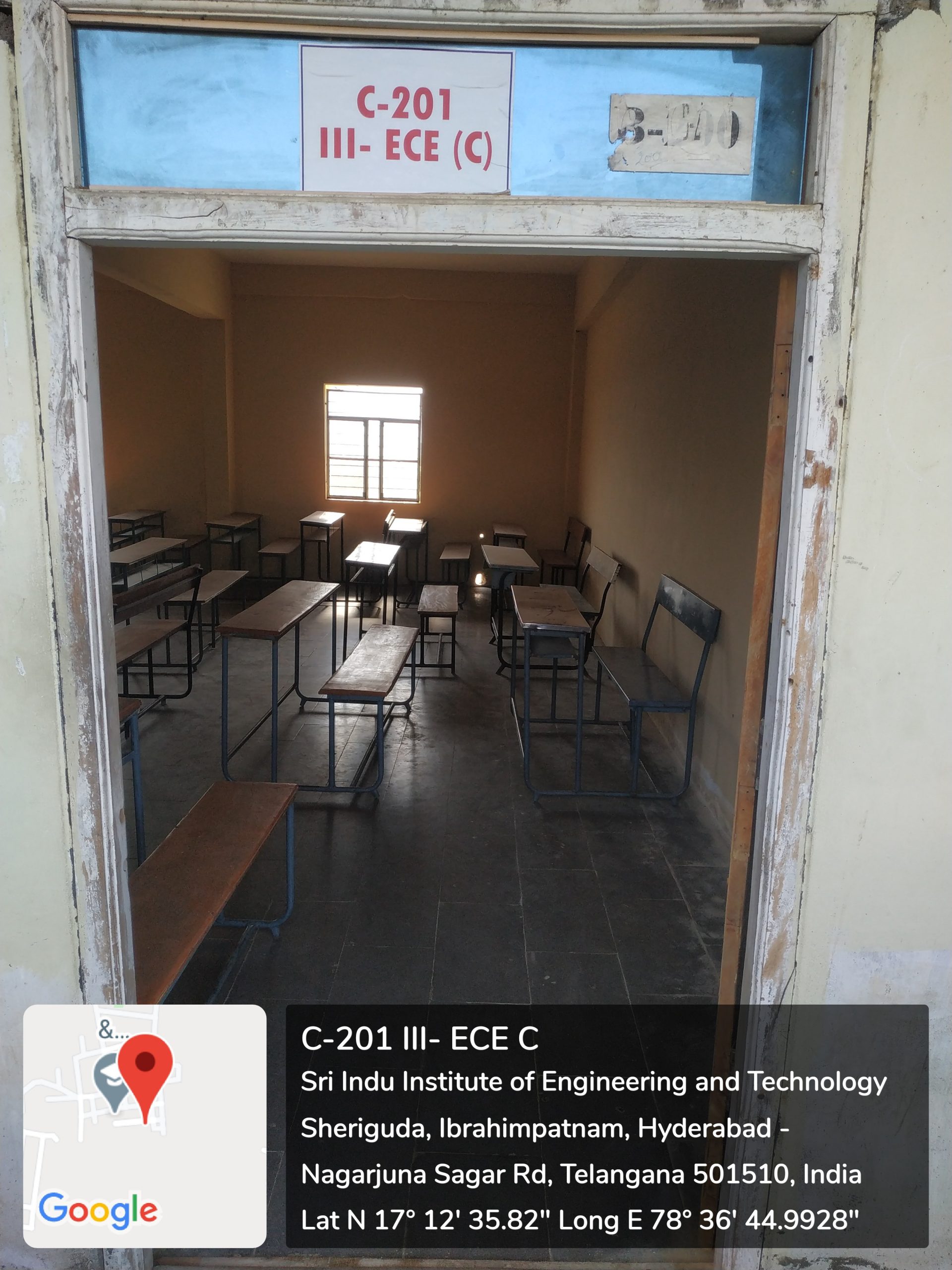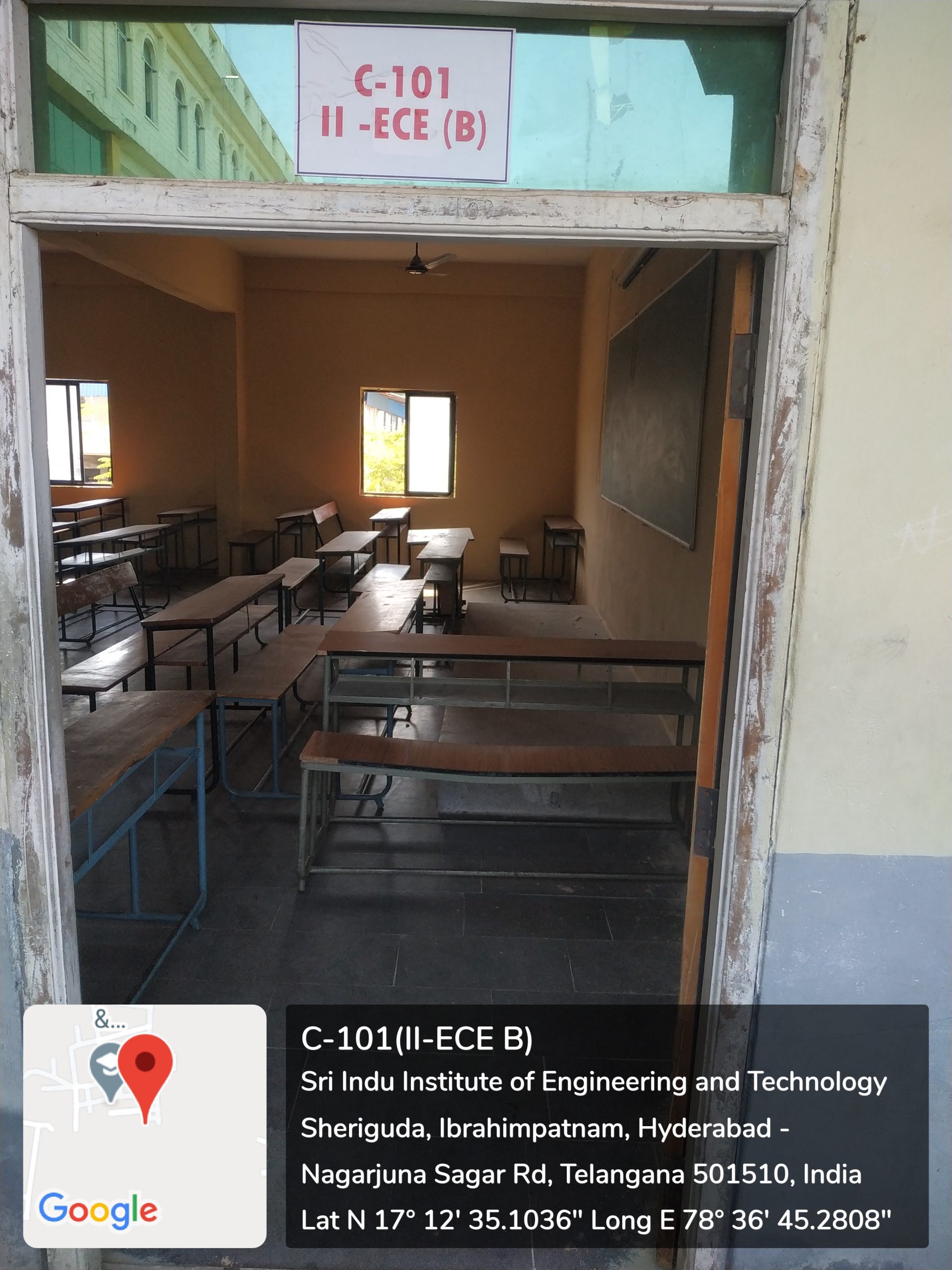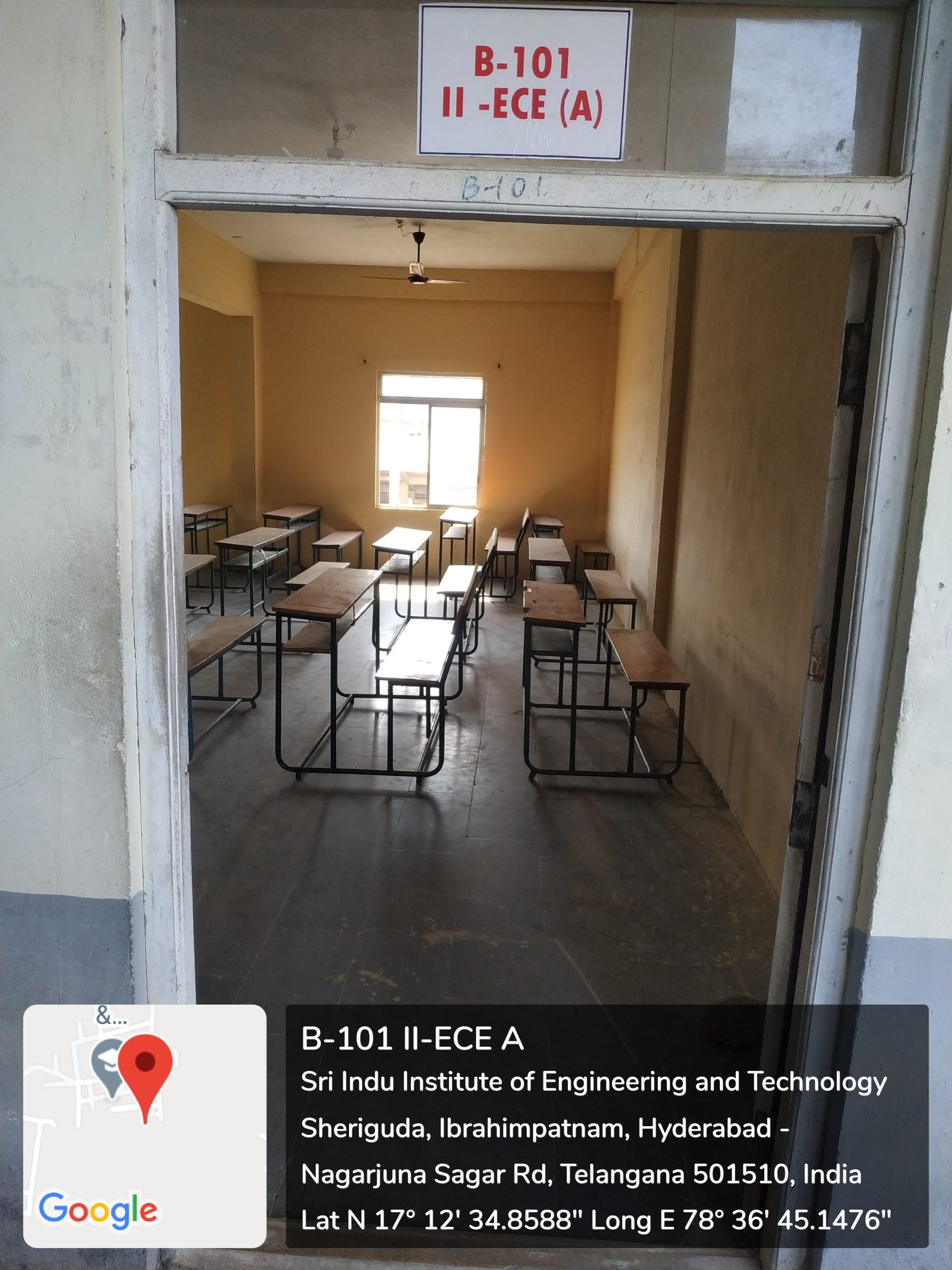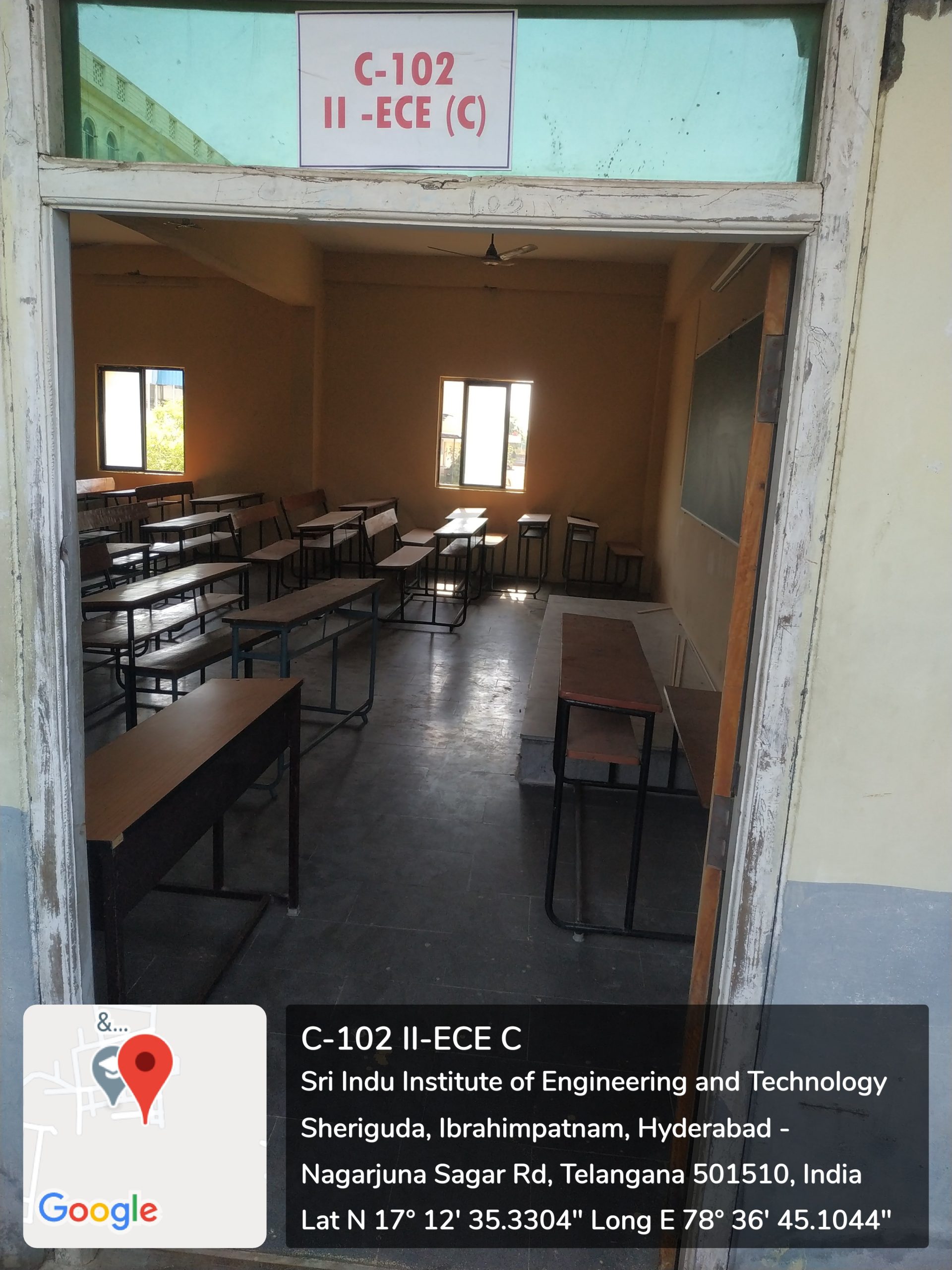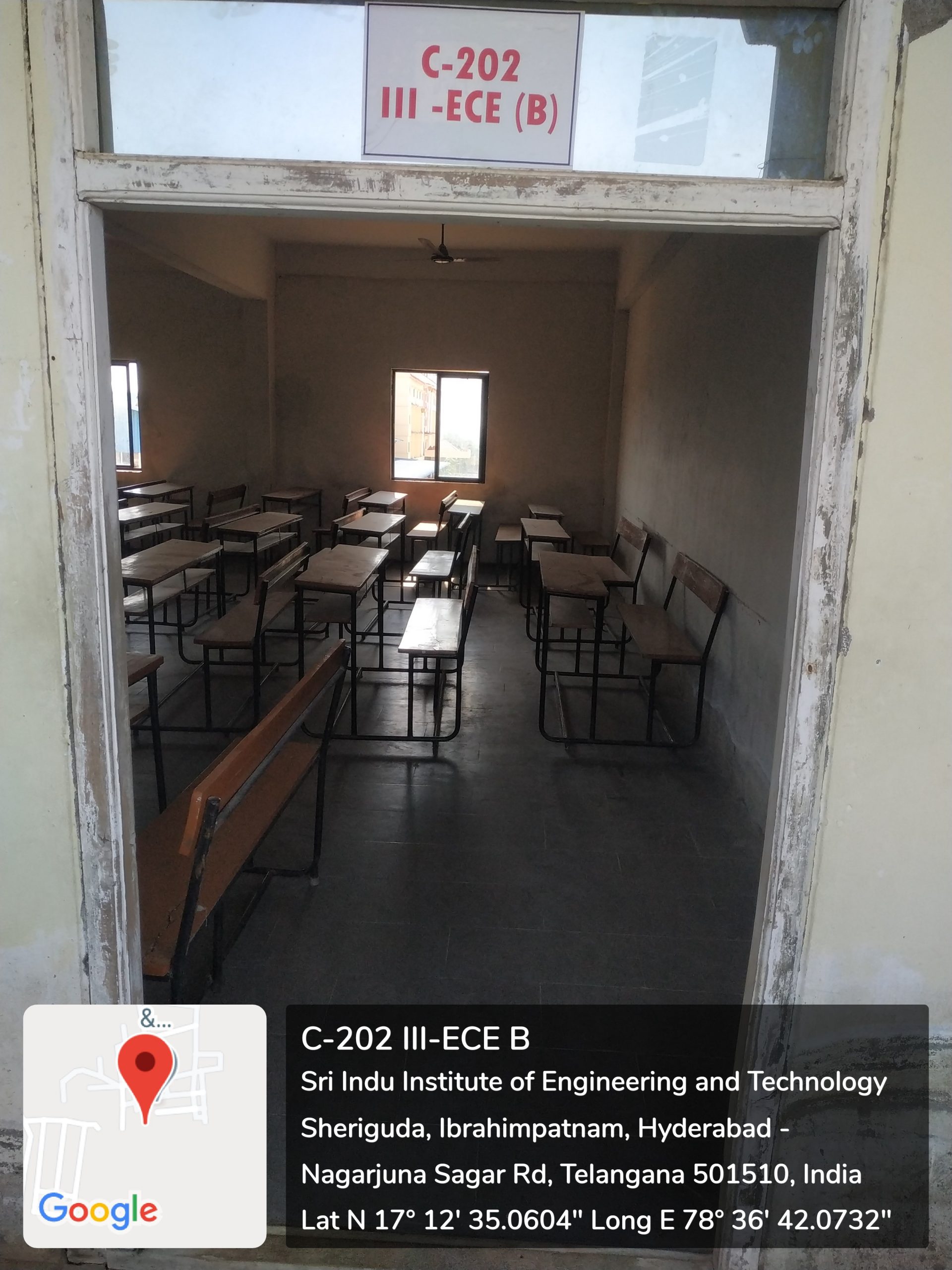B.Tech. Electronics and Communication Engineering Labs
Labs for II Year I Semester
According to present curriculum 2nd B-Tech 1st Semester Students perform experiments in Basic Simulation Laboratory. This laboratory is used to understand the subject and develop the innovativeness through software based programming. This laboratory is mainly focused to build the knowledge on course Signals and Systems and Probability theory and stochastic process. It is also used to understand and analyze the various signals performance through various systems. This laboratory is equipped with 30 numbers of PCs, with licensed software like MATLAB for simulation. To conduct value added course or video tutorial, facilities like LCD Projector.
Note
- All the experiments are to be simulated using MATLAB or equivalent software
- Minimum of 15 experiment are to be completed
List of Experiments
- Basic Operations on Matrices
- Generation of Various Signals and Sequences (Periodic and Aperiodic), such as Unit Impulse, Unit Step, Square, Saw tooth, Triangular, Sinusoidal, Ramp, Sinc.
- Operations on Signals and Sequences such as Addition, Multiplication, Scaling, Shifting, Folding, Computation of Energy and Average Power.
- Finding the Even and Odd parts of Signal/Sequence and Real and Imaginary parts of Signal.
- Convolution for Signals and sequences.
- Auto Correlation and Cross Correlation for Signals and Sequences.
- Verification of Linearity and Time Invariance Properties of a given Continuous/Discrete System.
- Computation of Unit sample, Unit step and Sinusoidal responses of the given LTI system and verifying its physical realiazability and stability properties.
- Gibbs Phenomenon Simulation.
- Finding the Fourier Transform of a given signal and plotting its magnitude and phase spectrum.
- Waveform Synthesis using Laplace Transform.
- Locating the Zeros and Poles and plotting the Pole-Zero maps in S-plane and Z-Plane for the given transfer function.
- Generation of Gaussian noise ( Real and Complex), Computation of its mean, M.S. Value and its Skew, Kurtosis, and PSD, Probability Distribution Function.
- Verification of Sampling Theorem.
- Removal of noise by Autocorrelation / Cross correlation.
- Extraction of Periodic Signal masked by noise using Correlation.
- Verification of Weiner-Khinchine Relations.
- Checking a Random Process for Stationarity in Wide sense.
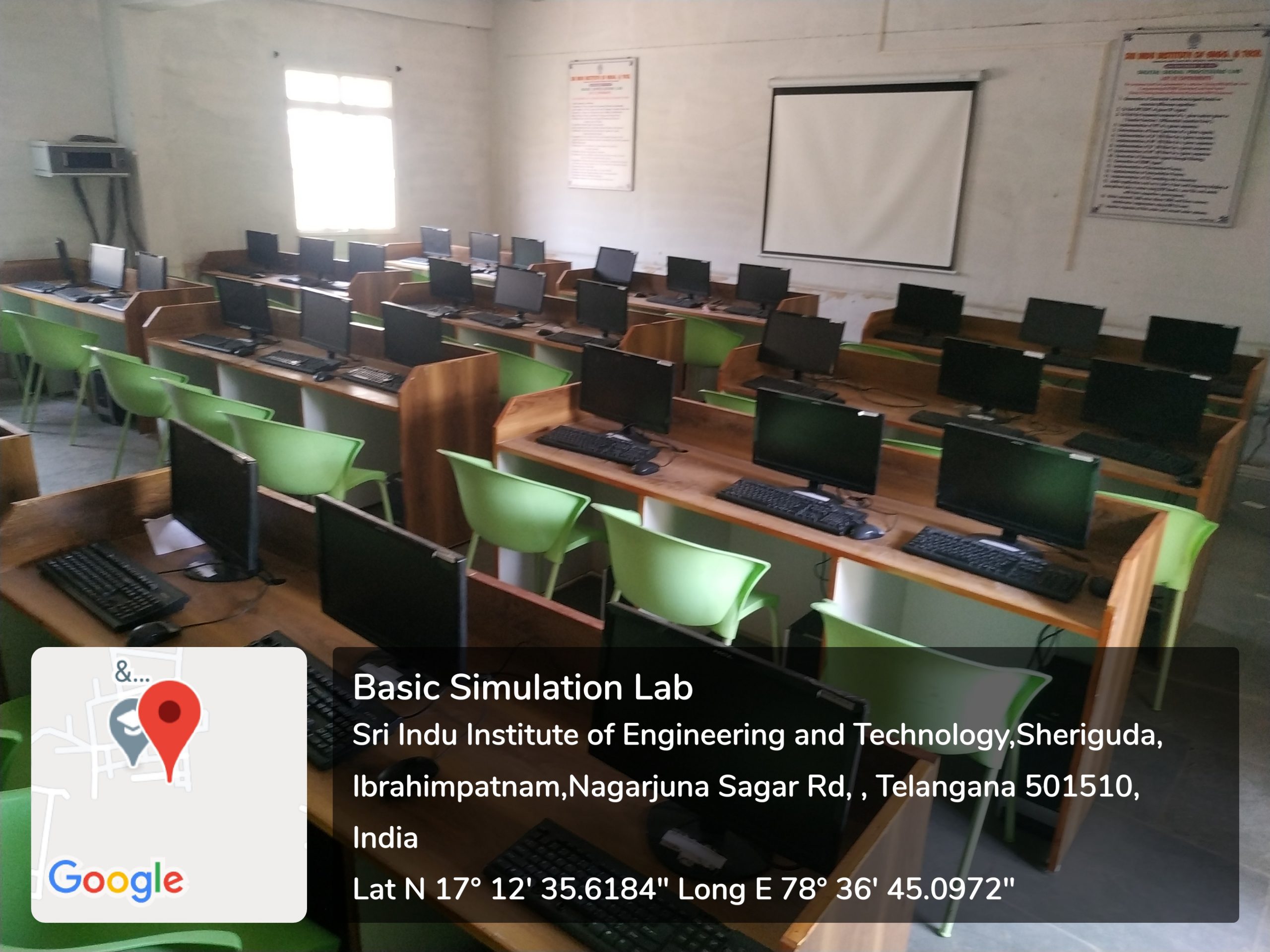
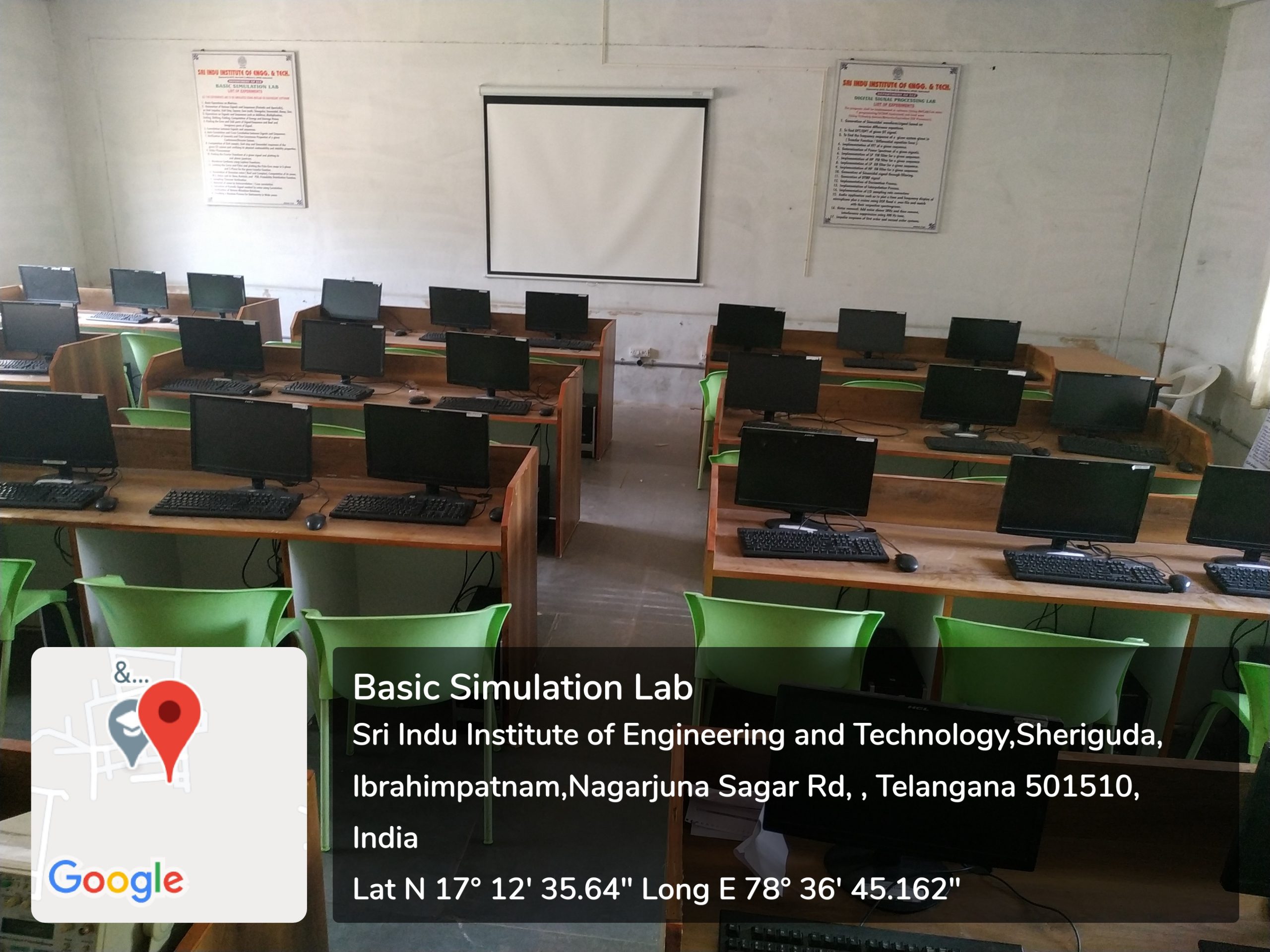
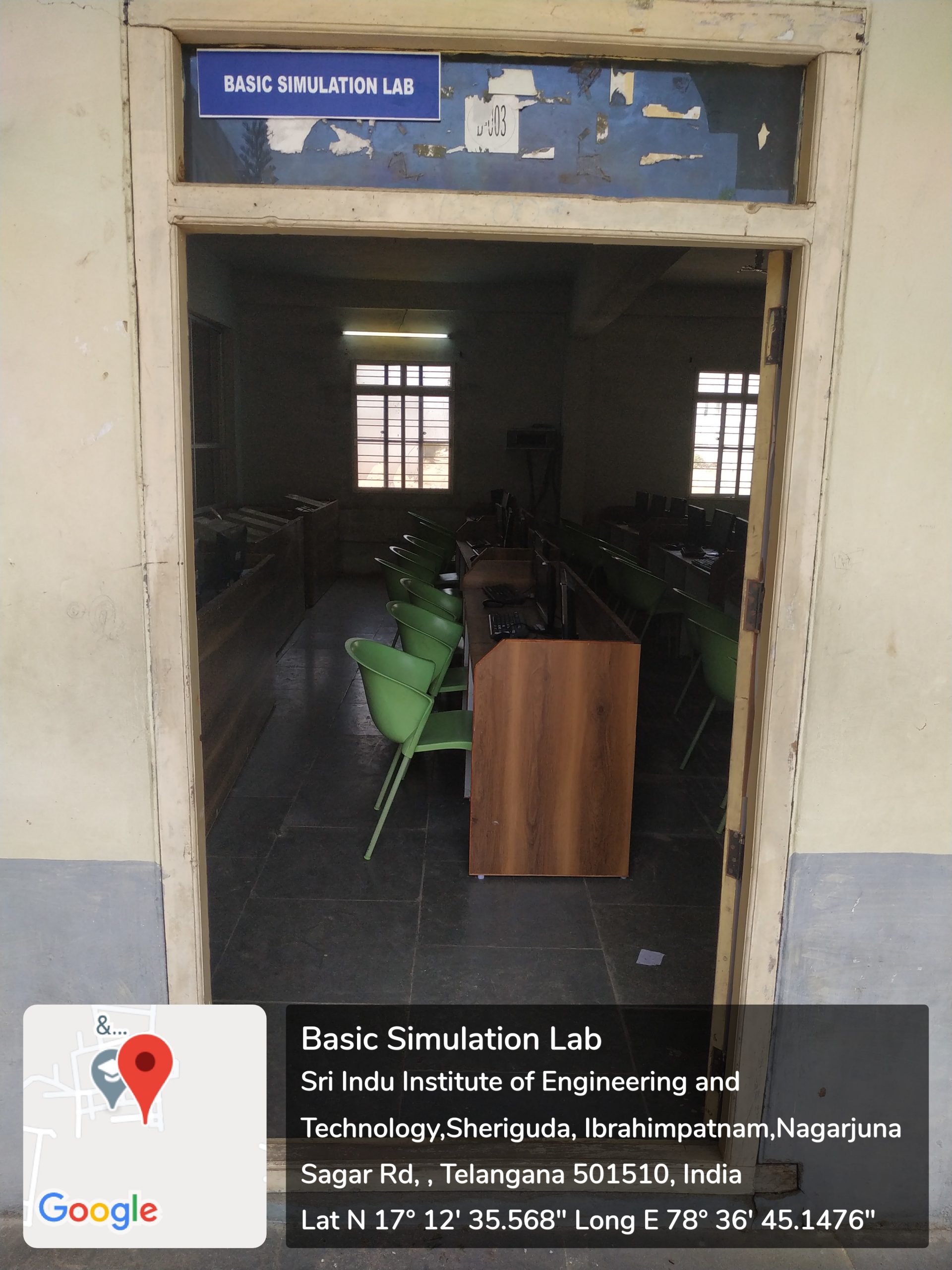
According to present curriculum 2nd B-Tech 1st Semester. Students perform experiments on Digital System Design Laboratory. Digital System Design (DSD) Lab was designed for understanding and designing of digital logic circuits. The main aim of this laboratory is to acquire the basic knowledge on digital logic gates to design and verify digital electronics circuits. This lab includes designing and testing of combinational circuits, sequential circuits and digital logic families
Note
- Implement using digital ICs, all experiments to be carried out.
List of Experiments
- Realization of Boolean Expressions using Gates
- Design and realization logic gates using universal gates
- Generation of clock using NAND / NOR gates
- Design a 4 – bit Adder / Subtractor
- Design and realization of a 4 – bit gray to Binary and Binary to Gray Converter
- Design and realization of an 8 bit parallel load and serial out shift register using flip-flops.
- Design and realization of a Synchronous and Asynchronous counter using flip-flops
- Design and realization of Asynchronous counters using flip-flops
- Design and realization of 8x1 MUX using 2x1 MUX
- Design and realization of 4 bit comparator
- Design and Realization of a sequence detector-a finite state machine
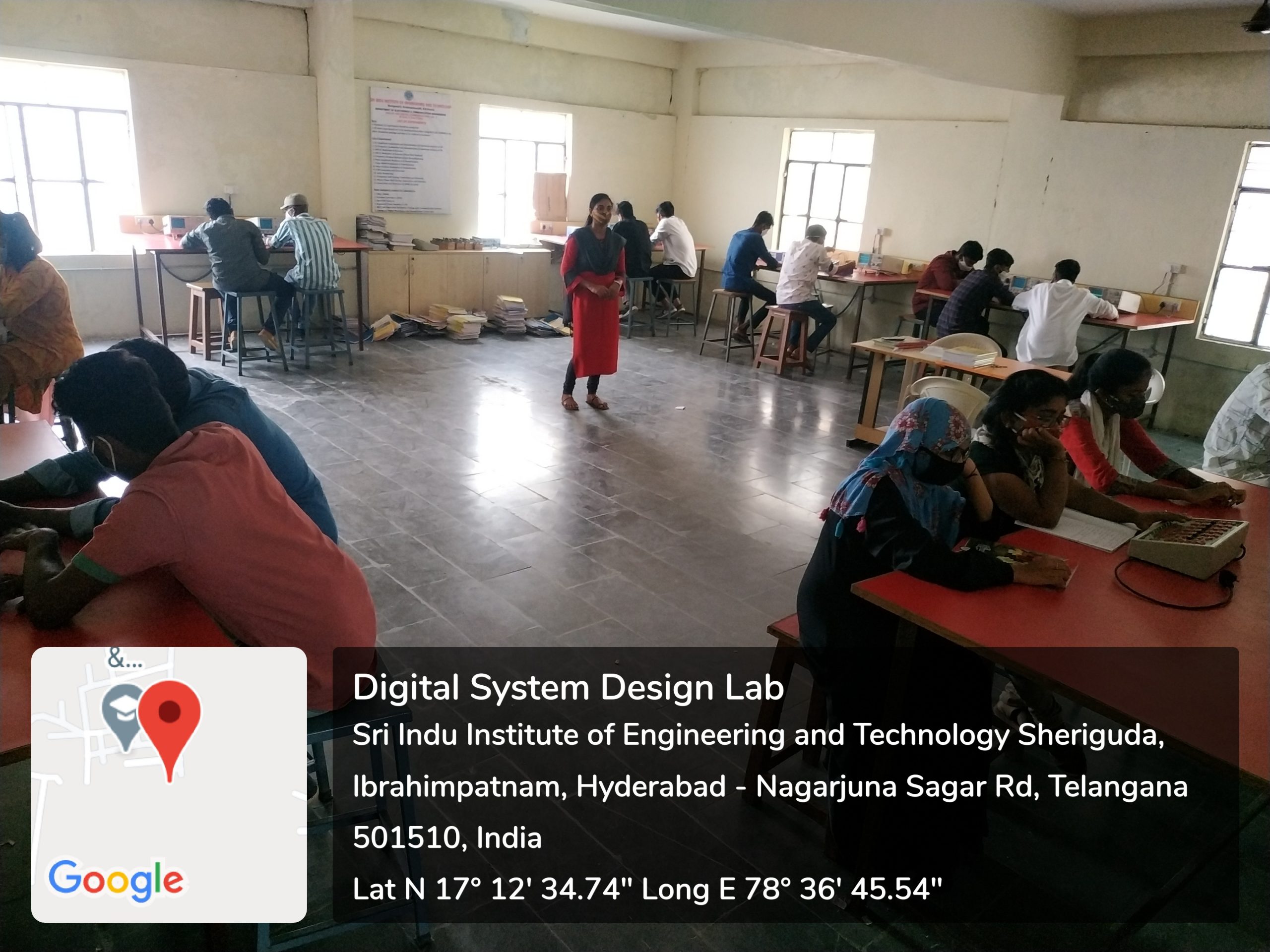
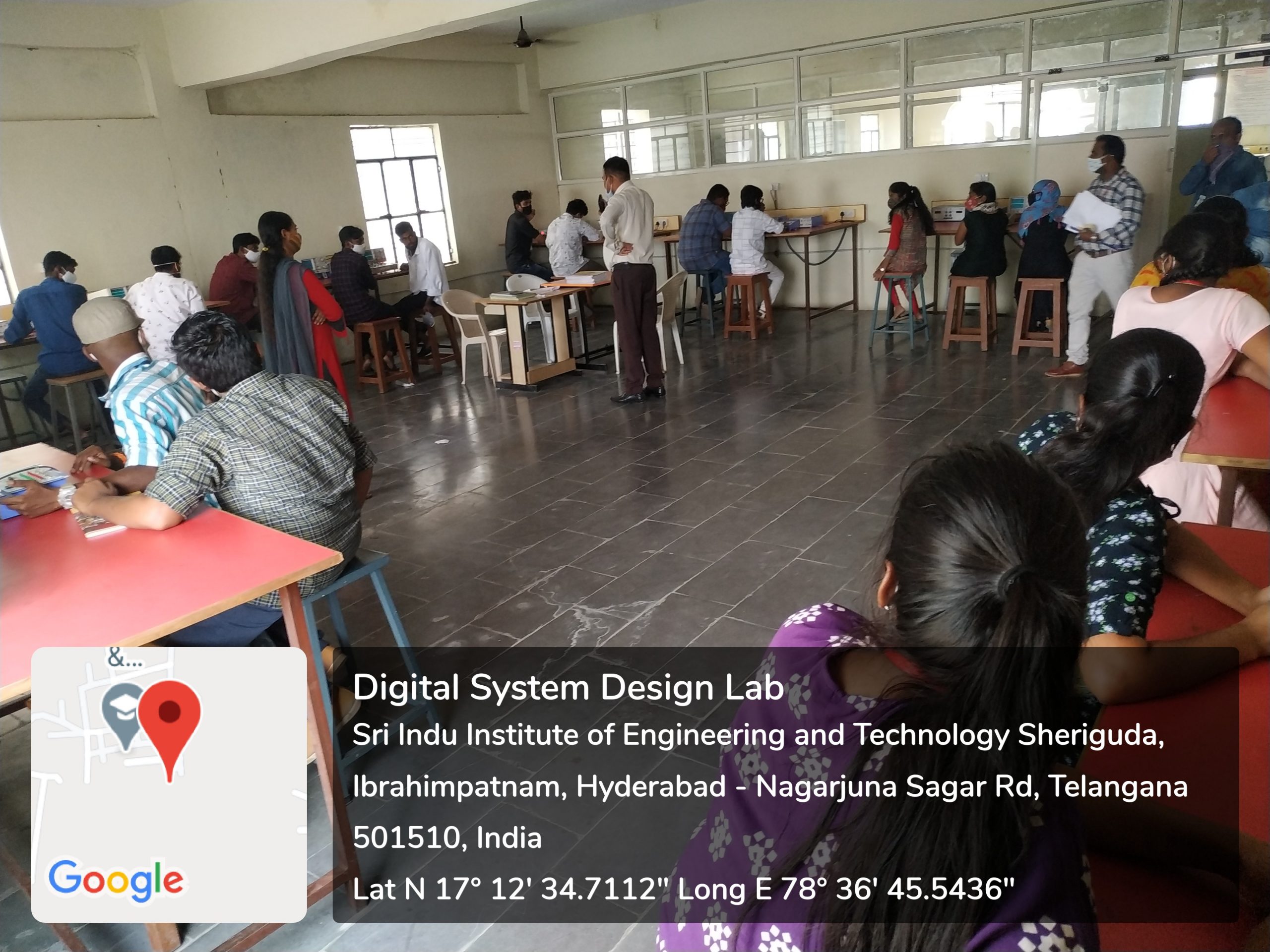
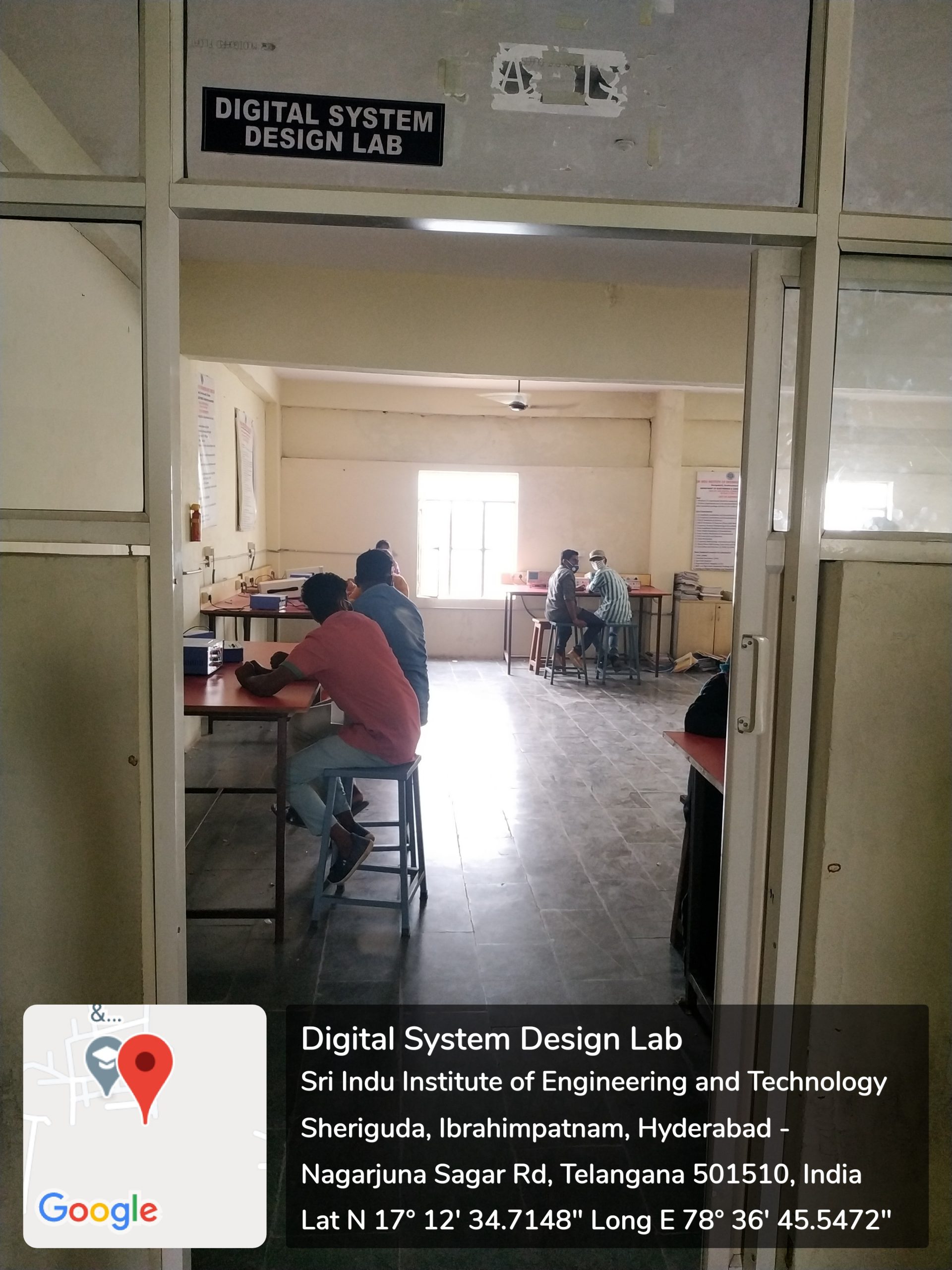
According to present curriculum 2nd B-Tech 1st Semester Students perform experiments on EDC Laboratory.EDC Laboratory can be described to understand the concepts, working and characteristics of Different Diodes, BJT and FET Transistors, amplifiers and compensation techniques of transistors .An ability to verify the working of different diodes, transistors, CRO probes and measuring instruments.
List of Experiments (Twelve Experiments to be Done)
Verify any twelve experiments in H/W Laboratory
- PN Junction diode characteristics A) Forward bias B) Reverse bias.
- Zener diode characteristics and Zener as voltage Regulator
- Full Wave Rectifier with & without filters
- Input and output characteristics of BJT in CE Configuration
- Input and output characteristics of FE in CS Configuration
- Common Emitter Amplifier Characteristics
- Common Base Amplifier Characteristics
- Common Source amplifier Characteristics
- Measurement of h-parameters of transistor in CB, CE, CC configurations
- Switching characteristics of a transistor
- SCR Characteristics.
- Types of Clippers at different reference voltages
- Types of Clampers at different reference voltages
- The steady state output waveform of clampers for a square wave input



Labs for II Year II Semester
According to present JNTU-Hyderabad curriculum II B.Tech II Semester students have Analog and Digital Communications Lab. This laboratory is important for the students wishing to emphasize the Analog and Digital Communications area. This Lab provides practical hands-on exposure to communication system building blocks, such as filters, mixers, and amplifiers, modulators, demodulators. Communications is a highly important and growing field and students should have opportunity to gain familiarity with communication test equipment and measurement techniques .Laboratory experiments which deal with all analog and digital modulation techniques. Analog and Digital Communications Lab is equipped with latest technology trainer kits for the different modulation and demodulation techniques, coding techniques, etc., to provide the practical approach to the students regarding basic analog and digital communication techniques
Note
- Minimum 12 experiments should be conducted
- All these experiments are to be simulated first either using MATLAB, COMSIM or any other simulation package and then to be realized in hardware
List of Experiments
- (i) Amplitude modulation and demodulation (ii) Spectrum analysis of AM
- (i) Frequency modulation and demodulation (ii) Spectrum analysis of FM
- DSB-SC Modulator & Detector
- SSB-SC Modulator & Detector (Phase Shift Method)
- Frequency Division Multiplexing & De multiplexing
- Pulse Amplitude Modulation & Demodulation
- Pulse Width Modulation & Demodulation
- Pulse Position Modulation & Demodulation
- PCM Generation and Detection
- Delta Modulation
- Frequency Shift Keying: Generation and Detection
- Binary Phase Shift Keying: Generation and Detection
- Generation and Detection (i) DPSK (ii) QPSK
Major Equipments Required for Laboratories
- CROs: 20MHz
- Function Generators: 2MHz
- Spectrum Analyzer
- Regulated Power Supplies: 0-30V
- MAT Lab/Equivalent Simulation Package with Communication tool box
- Analog and Digital Modulation and Demodulation Trainer Kits.
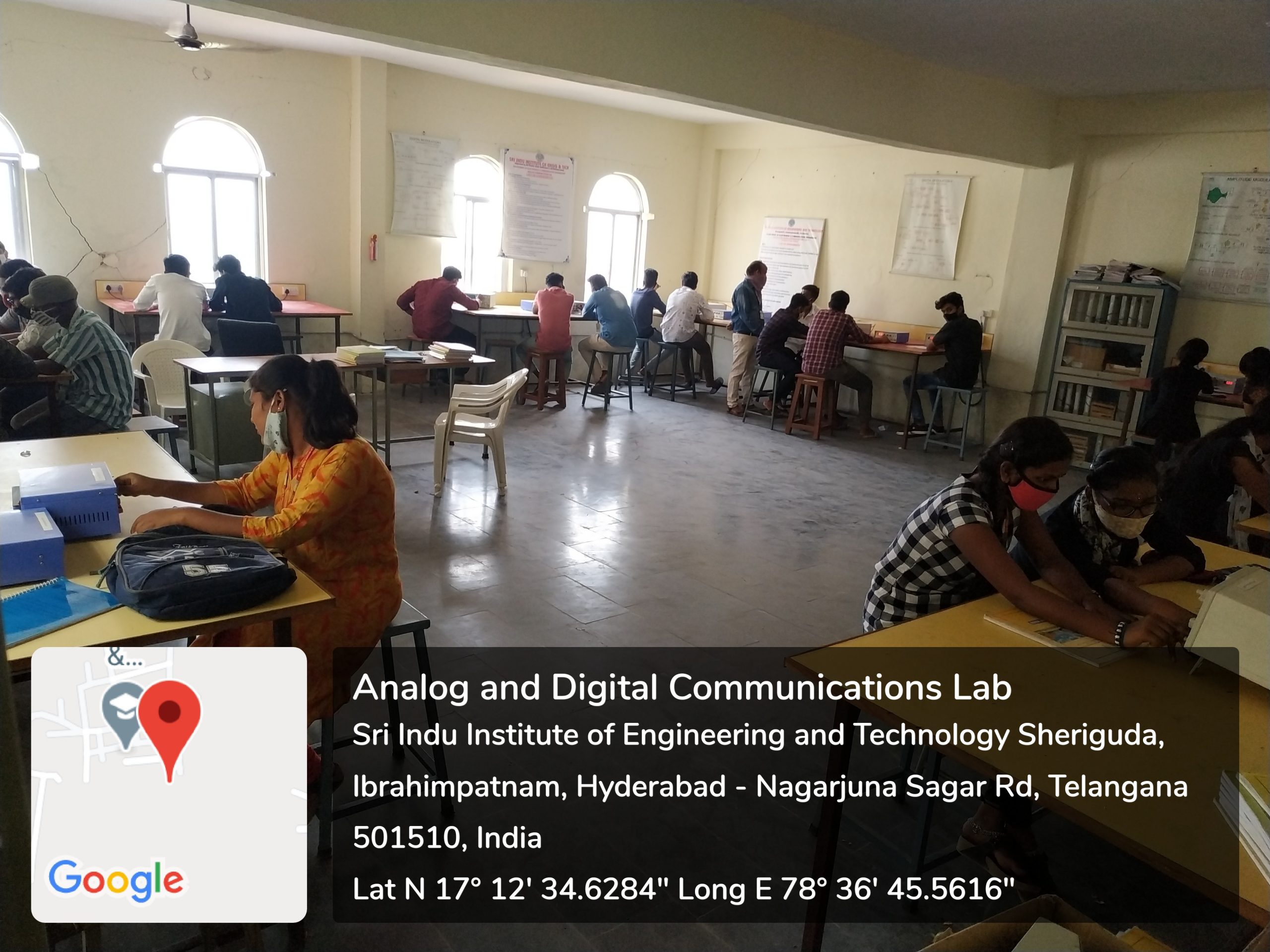
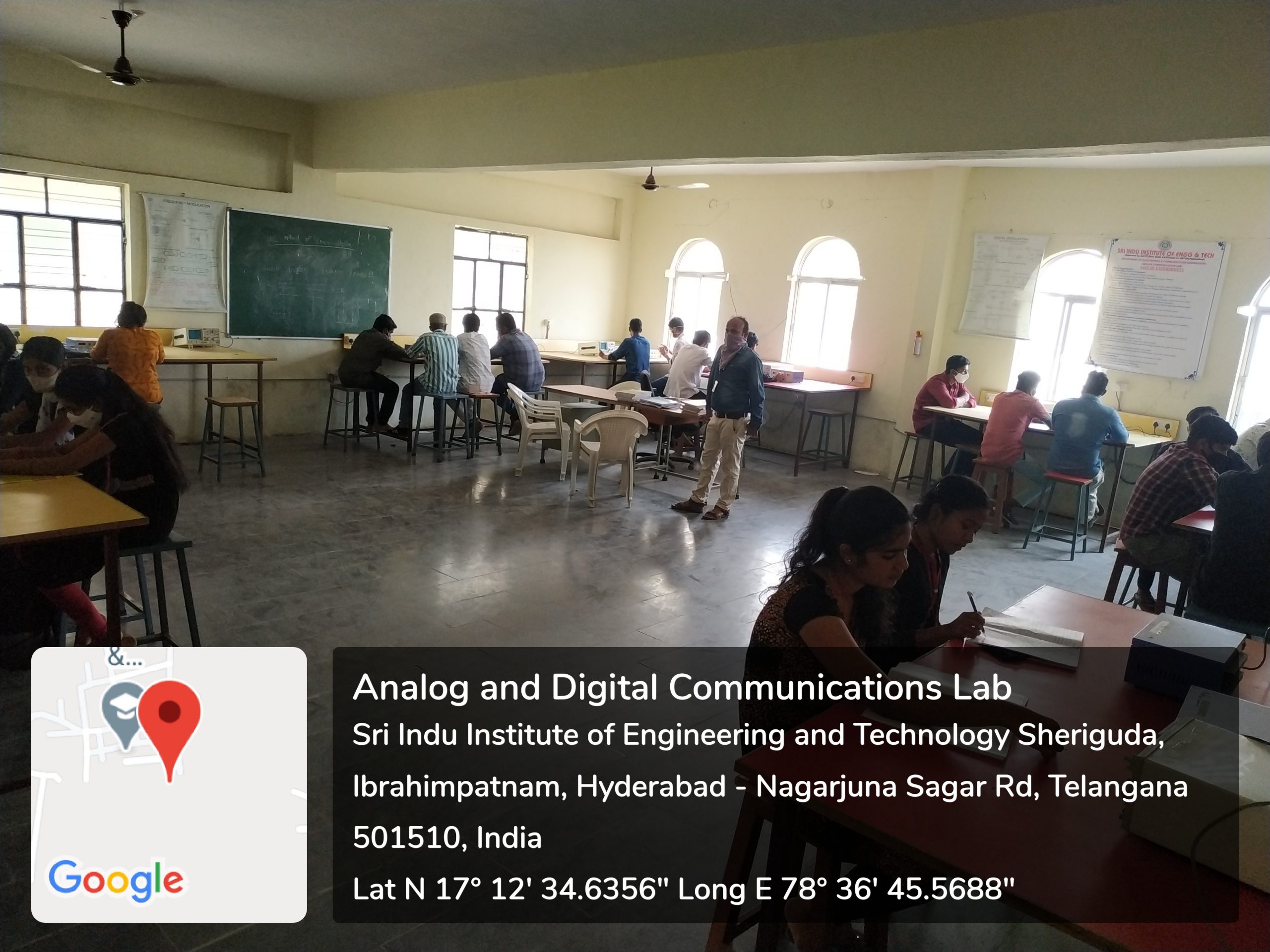
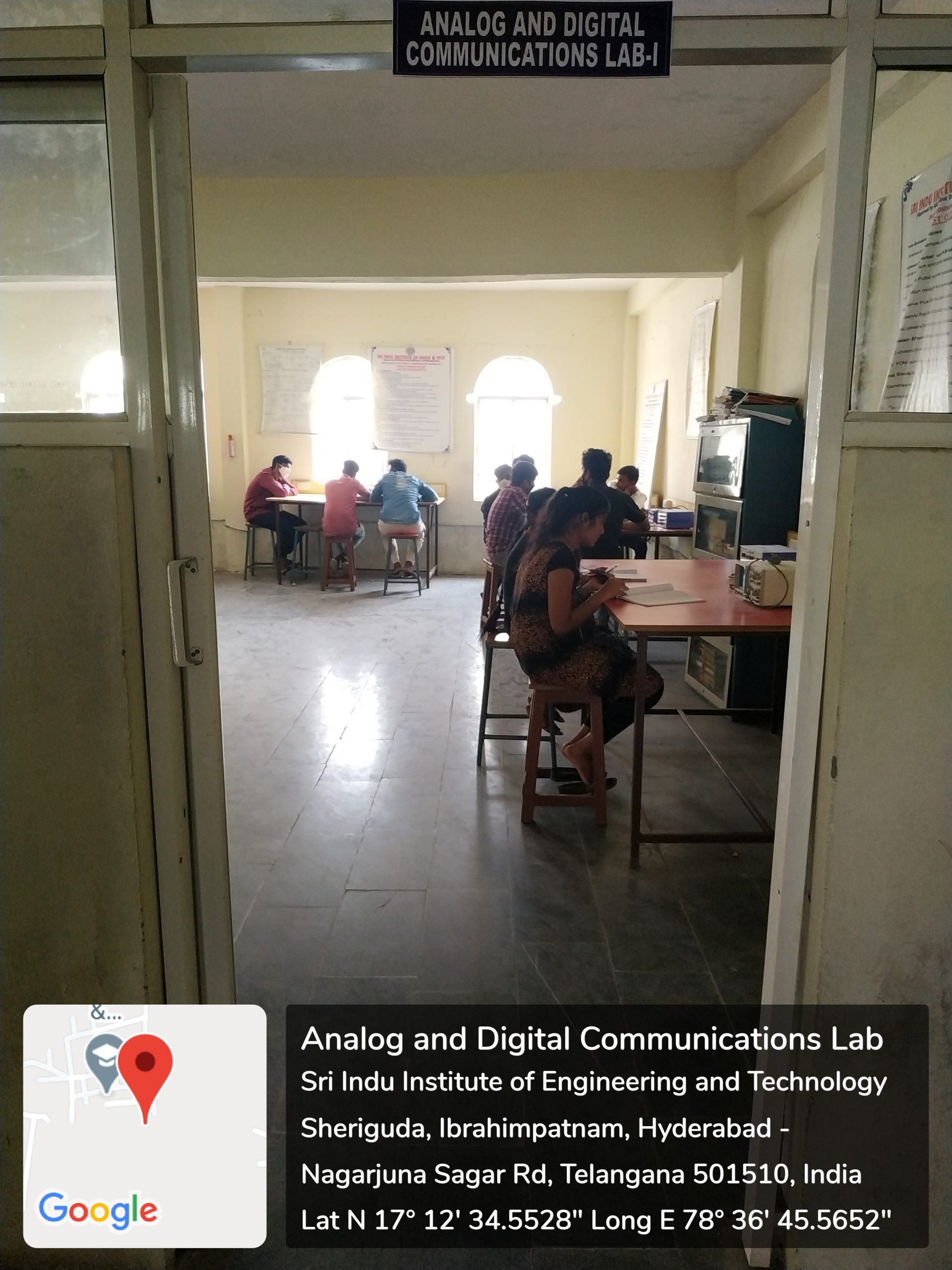
According to the present curriculum 2nd B.Tech 2nd semester students perform the experiments in electronic circuit analysis laboratory. Classification of amplifiers, Analyzing the CE, CB, CC amplifiers using small signal hybrid models .Deriving the voltage gain, current gain, input impedance and output impedances. Designing and analyzing the different types of Oscillators are the major experiments in this laboratory.
Multisim is a simulation tool that can be used to expedite the analysis and design of various circuits. This handout is not intended to be exhaustive, but rather it will get you started in simulating direct current (DC)circuits and Alternating current(AC). Transient and Frequency response capabilities will be discussed later in the course.
Note
- Experiments marked with * has to be designed, simulated and verified in hardware.
- Minimum of 9 experiments to be done in hardware
Hardware Testing in Laboratory
- Common Emitter Amplifier (*)
- Two Stage RC Coupled Amplifier
- Cascode amplifier Circuit (*)
- Darlington Pair Circuit
- Current Shunt Feedback amplifier Circuit
- Voltage Series Feedback amplifier Circuit (*)
- RC Phase shift Oscillator Circuit (*)
- Hartley and Colpitt’s Oscillators Circuit
- Class A power amplifier
- Class B Complementary symmetry amplifier (*)
- Design a Monostable Multivibrator
- The output voltage waveform of Miller Sweep Circuit
Major Equipments Required for Laboratories
- Computer System with latest specifications connected
- Window XP or equivalent
- Simulation software-Multisim or any equivalent simulation software
- Regulated Power Suppliers, 0-30V
- 20 MHz, Dual Channel Cathode Ray Oscilloscopes
- Functions Generators-Sine and Square wave signals
- Multimeters
- Electronic Components
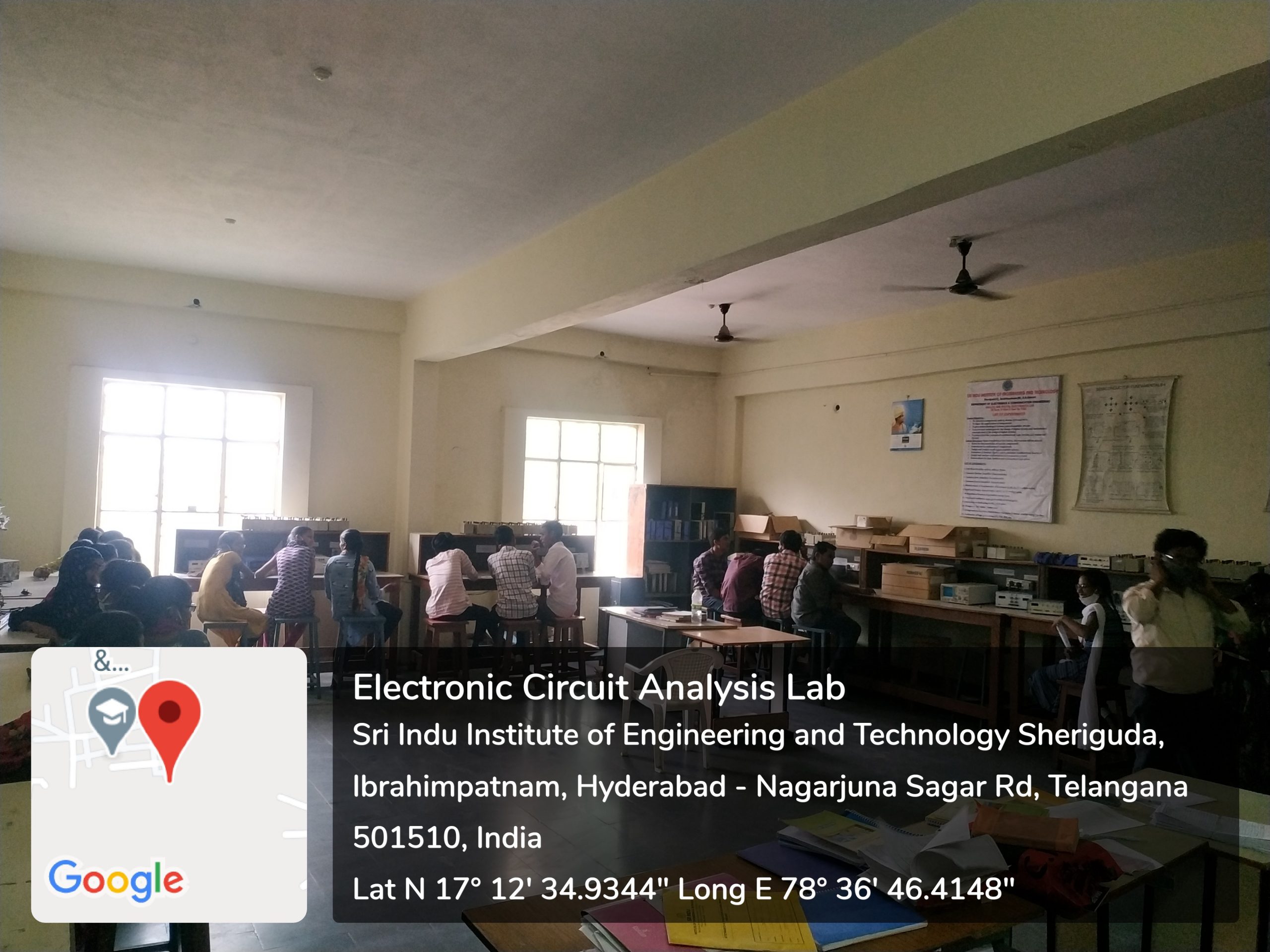
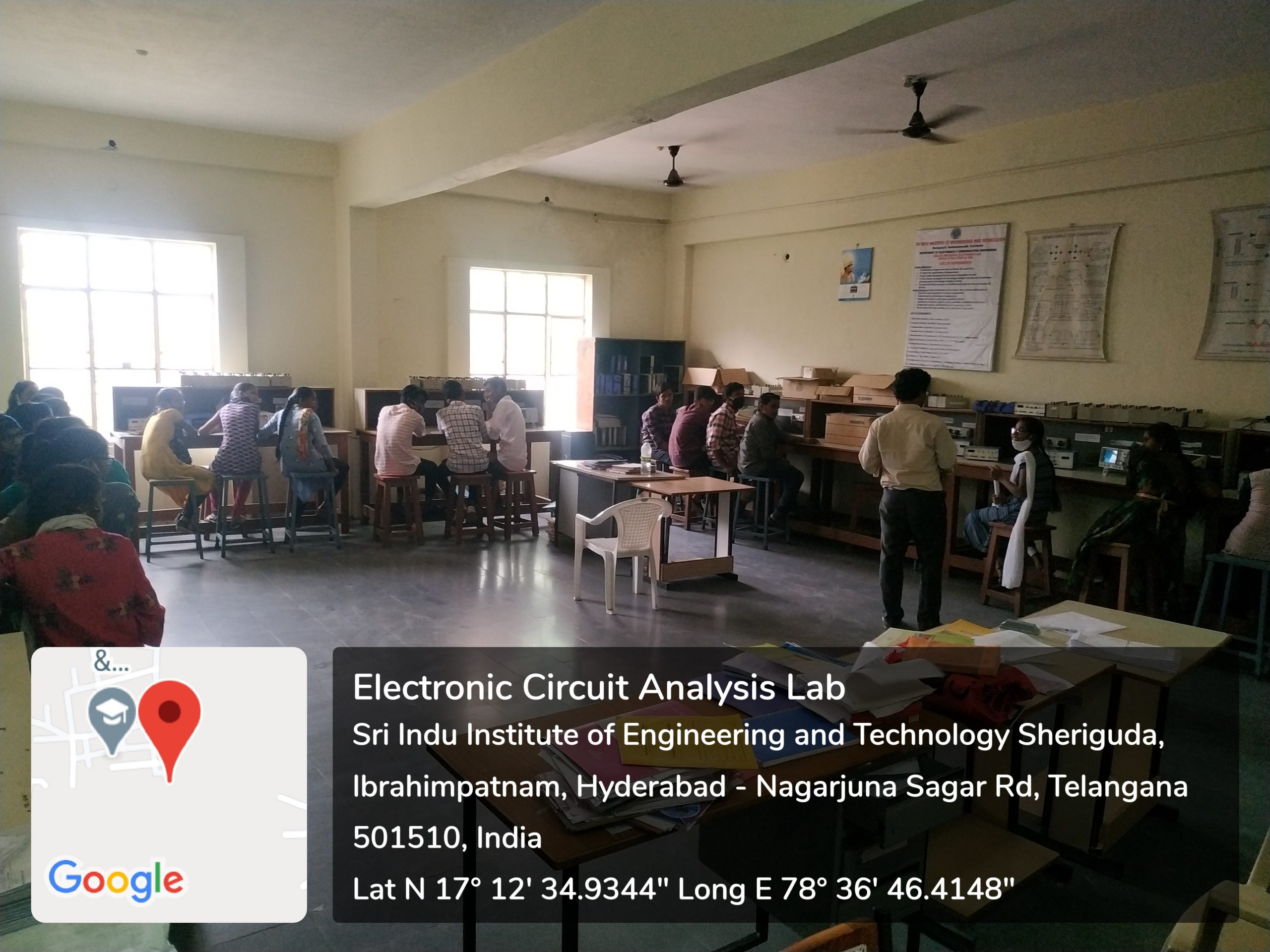
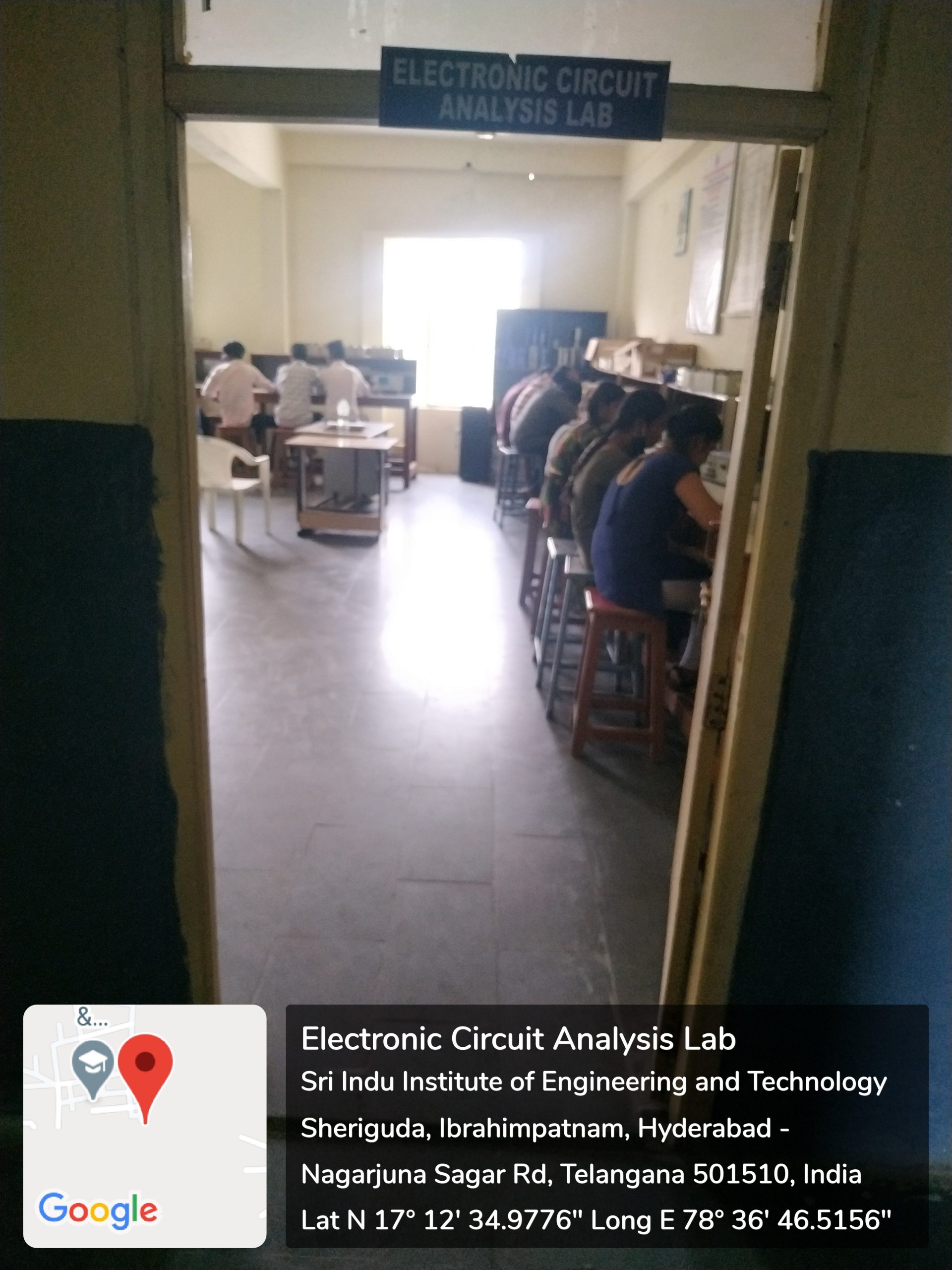
According to present curriculum 2rd B-Tech 2nd Semester Students perform experiments on IC Applications Laboratory. IC Applications Laboratory was established for understanding Integrated Circuits. The laboratory introduces the use, Characterization and analysis of Integrated Circuits with a focus on Applications. The lab introduces to the student’s IC 741 and its applications, 555 timer and various voltage regulators..This laboratory is fully equipped with major kits like linear applications, Cathode Ray Oscilloscope and Function generator.
Note
- Verify the functionality of the IC in the given application
Design and Implementation of
- Inverting and Non-Inverting Amplifiers using Op Amps
- Adder and Subtractor using Op Amp.
- Comparators using Op Amp.
- Integrator Circuit using IC 741.
- Differentiator Circuit using Op Amp.
- Active filter Applications-LPF, HPF (First Order)
- IC 741 waveform Generators-Sine, Square wave and Triangular Waves.
- Mono-Stable Multivibrator using IC 555.
- Astable multivibrator using IC 555.
- Schmitt Trigger Circuits using IC 741.
- IC 565-PLL Applications.
- Voltage Regulator using IC 723
- Three terminal voltage regulators-7805, 7809, 7912
Major Equipments Required for Laboratories
- 5 V Fixed Regulated Power Supply/ 0-5V or more Regulated Power Supply.
- 20 MHz Oscilloscope with Dual Channel.
- Bread board and components/ Trainer Kit.
- Multimeter.
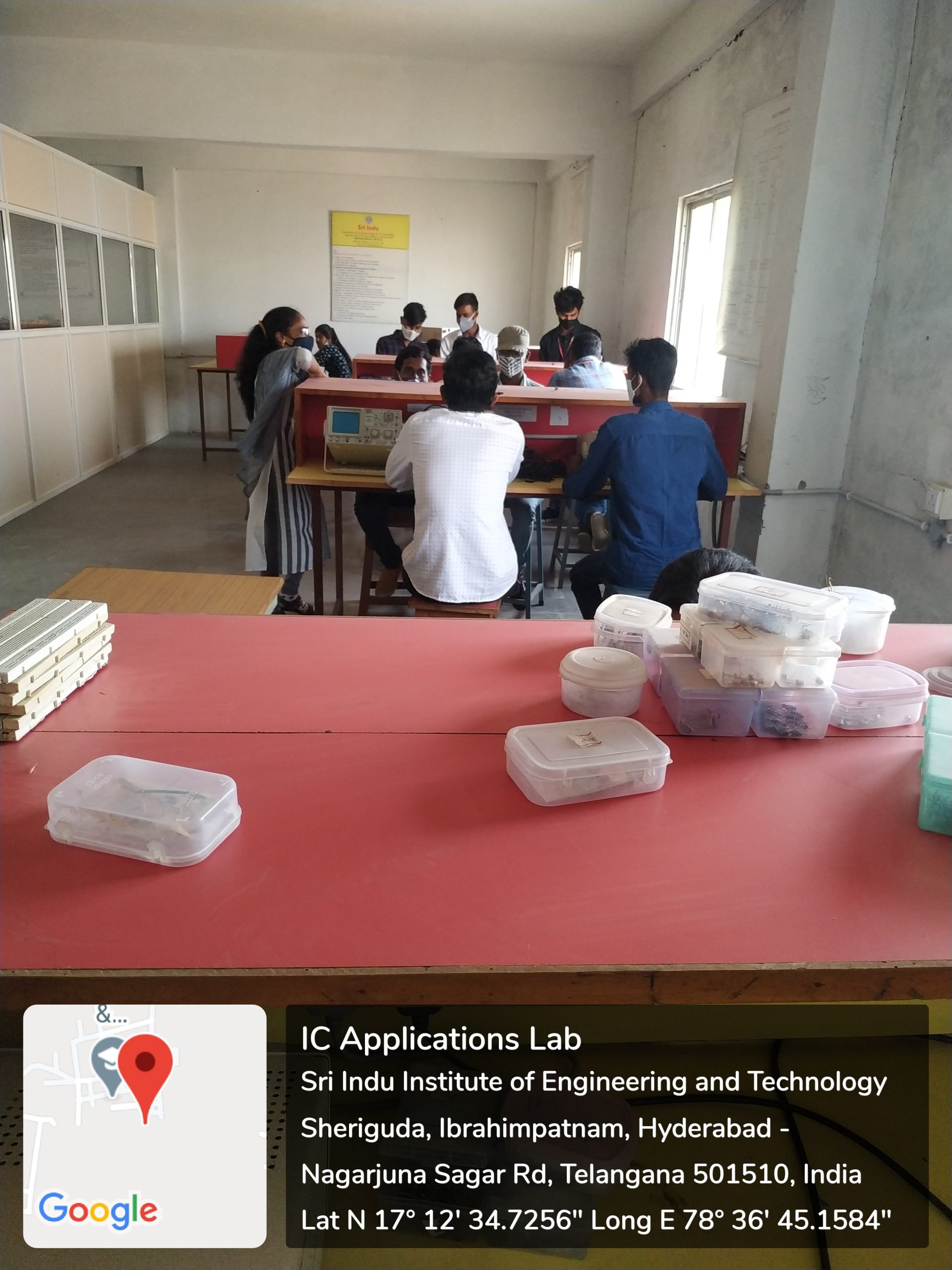
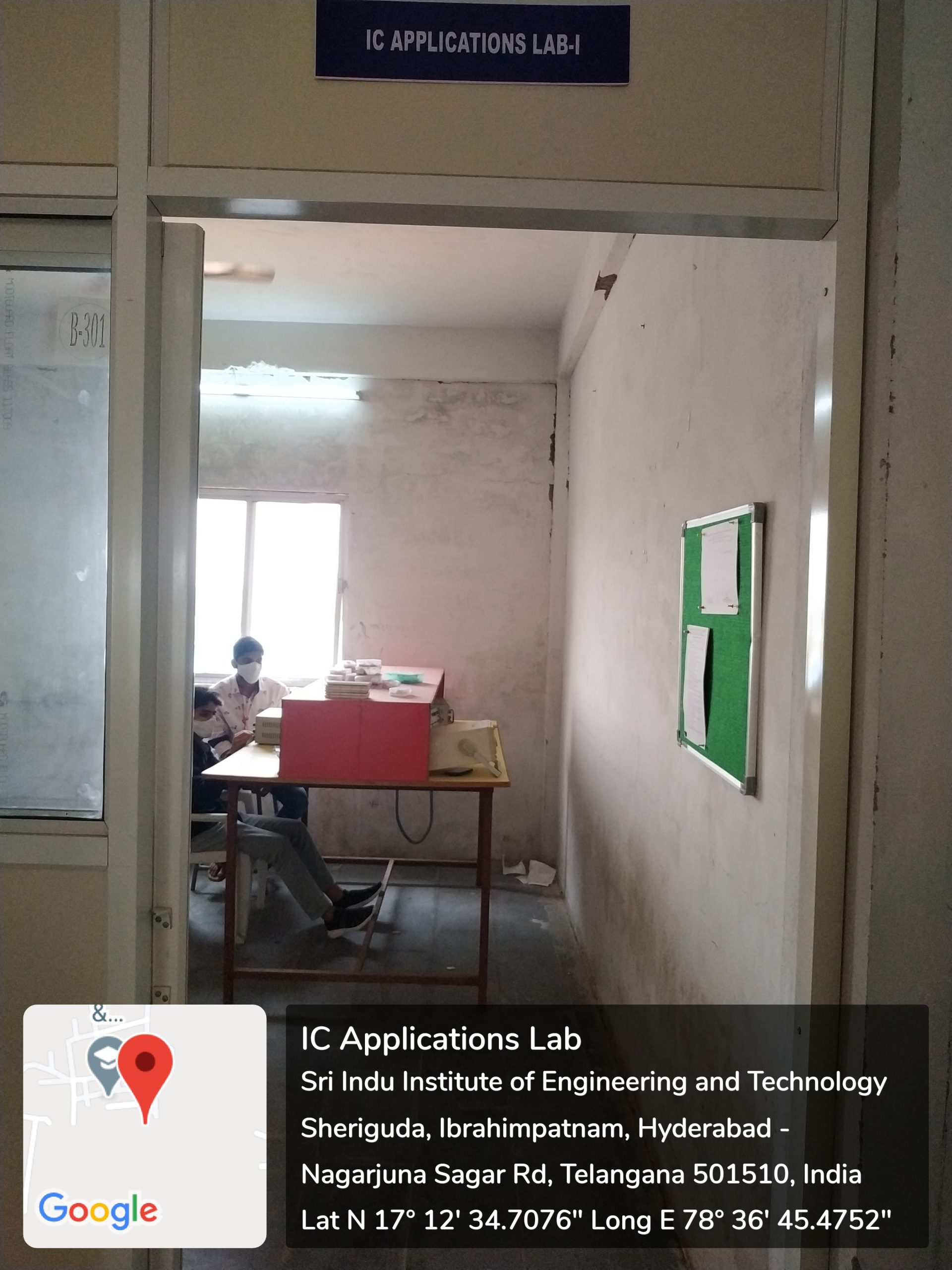
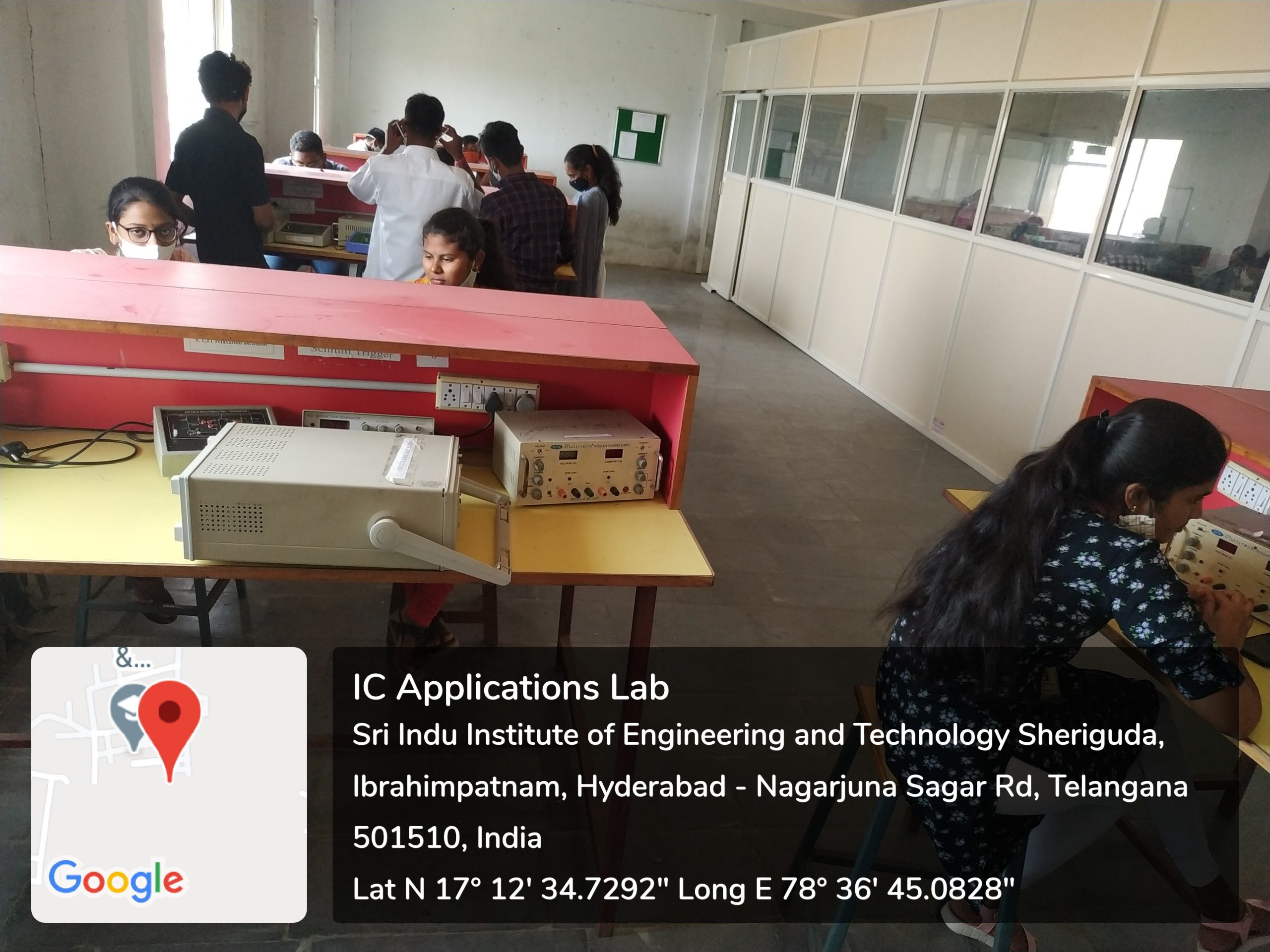
Labs for III Year I Semester
According to present curriculum 3rd B-Tech 1st Semester Students can gain practical knowledge about microprocessor 8086 and microcontroller 8051.This laboratory helps the students to develop their own programming skills and implement the various applications like arithmetic and logical operations, string manipulations are taught to the students in the laboratory, so that it will enable them to understand the concepts about assembly language programming , Interfacing of, Memory, I/O devices, Programmable chips and Peripherals.
Cycle 1: Using 8086 Processor Kits and/or Assembler (5 Weeks)
Assembly Language Programs to 8086 to Perform
- Arithmetic, Logical, String Operations on 16 Bit and 32-Bit Data.
- Bit level Logical Operations, Rotate, Shift, Swap and Branch Operations
Cycle 2: Using 8051 Microcontroller Kit (6 weeks)
Introduction to IDE
- Assembly Language Programs to Perform Arithmetic (Both Signed and Unsigned) 16 Bit Data Operations, Logical Operations (Byte and Bit Level Operations), Rotate, Shift, Swap and Branch Instructions
- Time delay Generation Using Timers of 8051.
- Serial Communication from / to 8051 to / from I/O devices.
- Program Using Interrupts to Generate Square Wave 10 KHZ Frequency on P2.1 Using Timer 0 8051 in 8 bit Auto reload Mode and Connect a 1 HZ Pulse to INT1 pin and Display on Port 0. Assume Crystal Frequency as 11.0592 MHZ
Cycle 3: Interfacing I/O Devices to 8051(5 Weeks)
- 7 Segment Display to 8051
- Matrix Keypad to 8051.
- Sequence Generator Using Serial Interface in 8051.
- 8 bit ADC Interface to 8051.
- Triangular Wave Generator through DAC interfaces to 8051.
Text Books
- Advanced Microprocessors and Peripherals by A K Ray, Tata McGraw-Hill Education, 2006
- The 8051 Microcontrollers: Architecture, Programming & Applications by Dr. K. Uma Rao, Andhe Pallavi, Pearson, 2009.
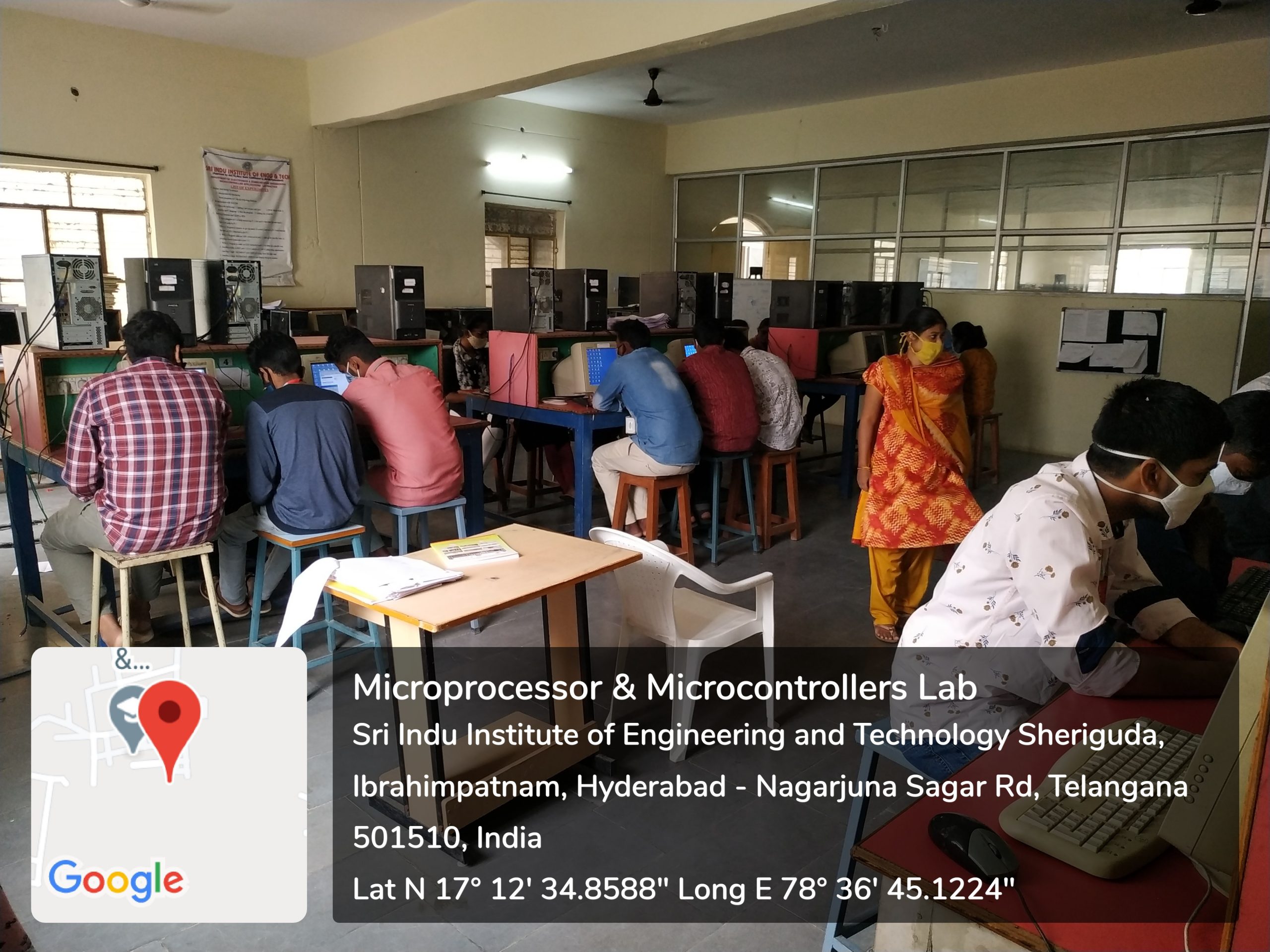
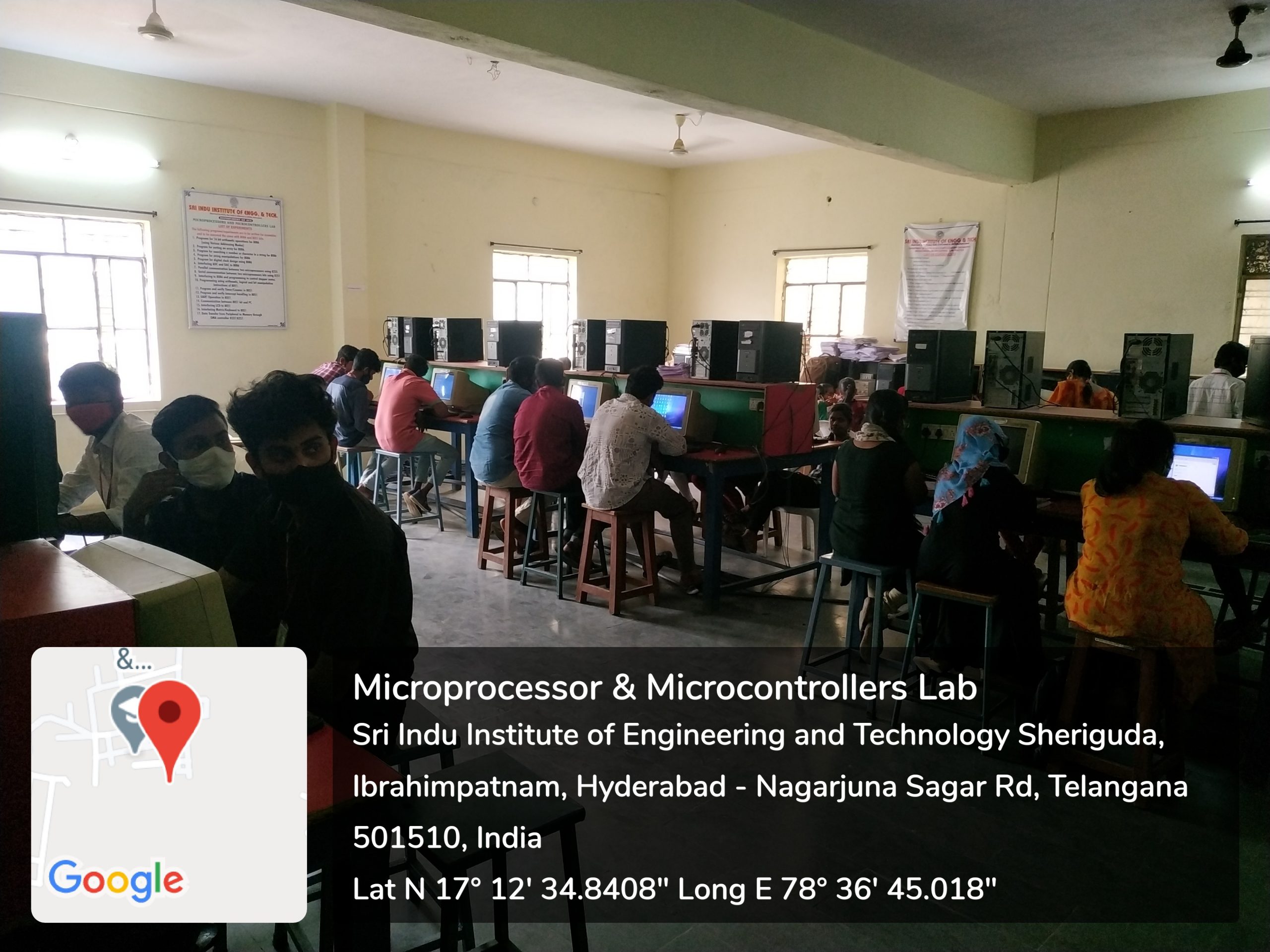
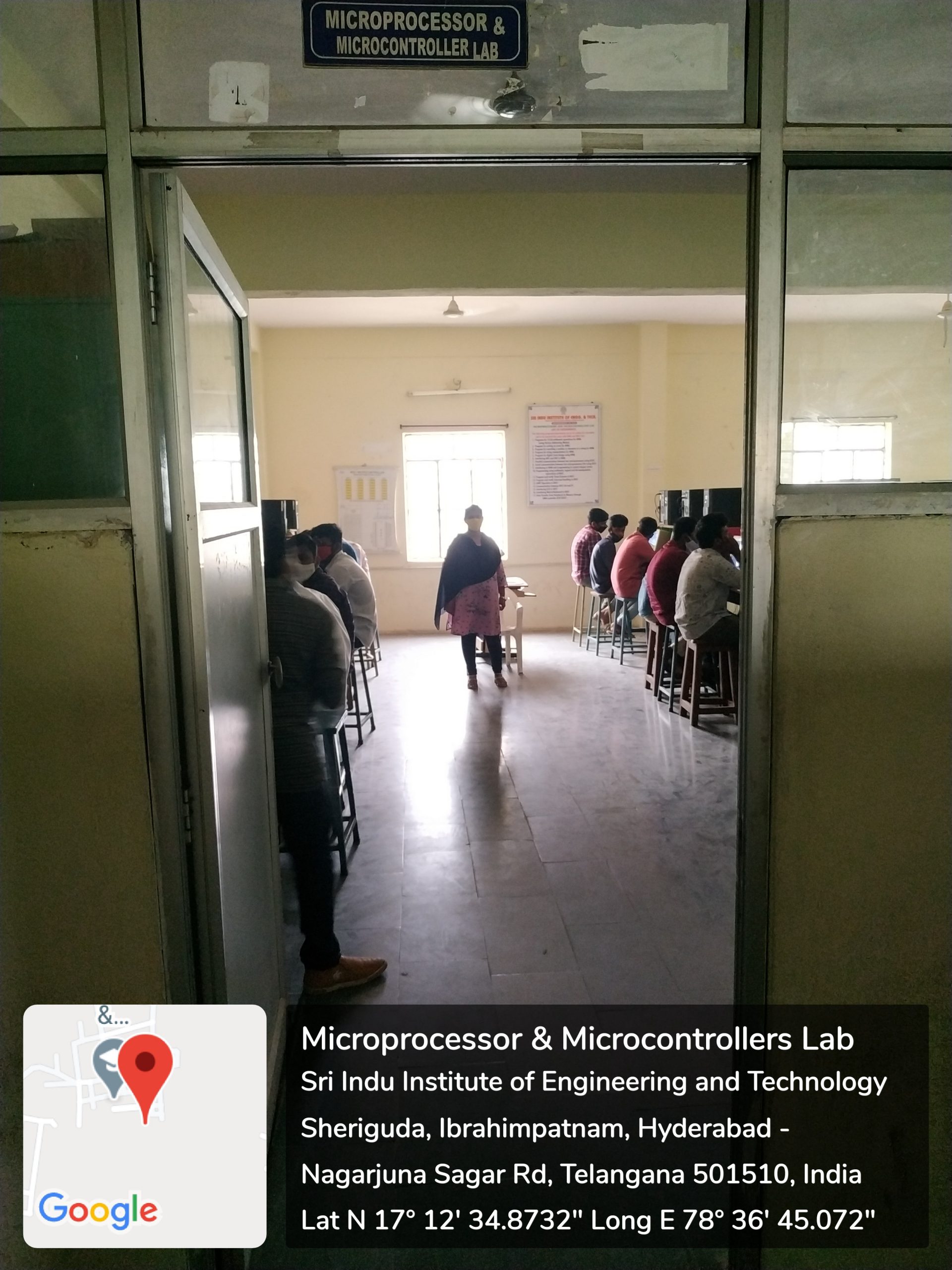
According to present curriculum 3rd B-Tech 1st Semester Students perform experiments on Data Communication and Computer Network Laboratory (DC&CN).In this lab, students implement the transmission protocols on LAN trainer system. Computers are available and configured as host and nodes to implement and study various LAN topologies like BUS, DUAL BUS, RING, STAR topologies. This lab is also equipped with serial and parallel communication systems. Stop and wait, Go and Back and selective/repeat protocols are also implemented for LAN .Network simulator (NS2) software are installed on computers to simulate and analyze various network entities. CISCO-packet tracer and Wire shark open source packet analyzer are aided in DCN lab for the research and project. Quall net simulator software is used to test and simulate owned scalable network technology. Researchers may use these tools for planning and testing the behavior of the of physical communication networks.
Note
- Minimum of 12 Experiments have to be conducted
- All the Experiments may be Conducted using Network Simulation software like NS-2, NSG-2.1 and Wire SHARK/equivalent software.
- Experiments 2 to 10 Performance may be evaluated through simulation by using the parameters Throughput, Packet Delivery Ratio, Delay etc
List of Experiments
- Writing a TCL Script to create two nodes and links between nodes
- Writing a TCL Script to transmit data between nodes
- Evaluate the performance of various LAN Topologies
- Evaluate the performance of Drop Tail and RED queue management schemes
- Evaluate the performance of CBQ and FQ Scheduling Mechanisms
- Evaluate the performance of TCP and UDP Protocols
- Evaluate the performance of TCP, New Reno and Vegas
- Evaluate the performance of AODV and DSR routing protocols
- Evaluate the performance of AODV and DSDV routing protocols
- Evaluate the performance of IEEE 802.11 and IEEE 802.15.4
- Evaluate the performance of IEEE 802.11 and SMAC
- Capturing and Analysis of TCP and IP Packets
- Simulation and Analysis of ICMP and IGMP Packets
- Analyze the Protocols SCTP, ARP, NetBIOS, IPX VINES
- Analysis of HTTP, DNS and DHCP Protocols
Major Equipment Required
- Required software (Open Source) like NS-2, NSG-2.1 and Wire SHARK
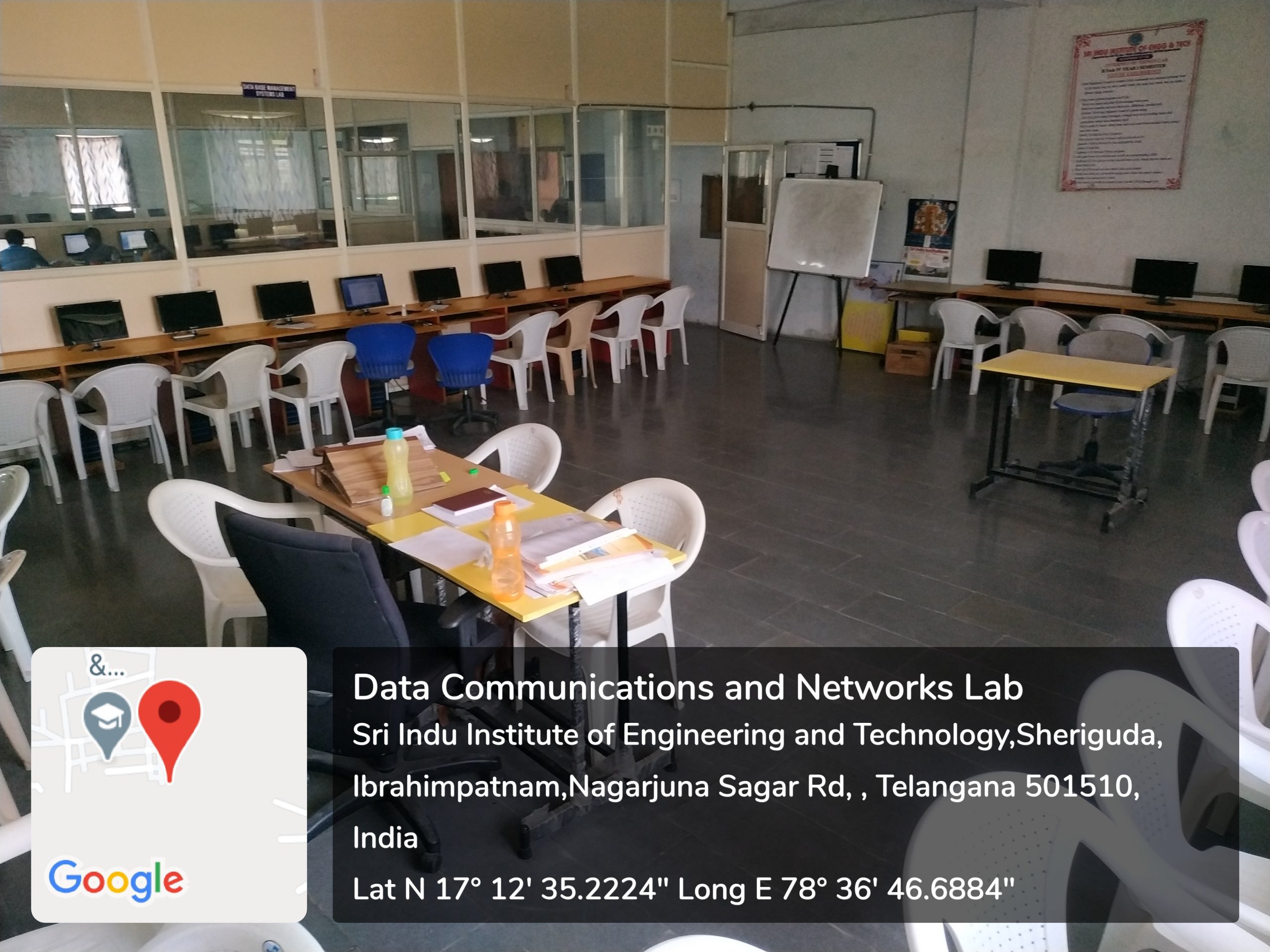
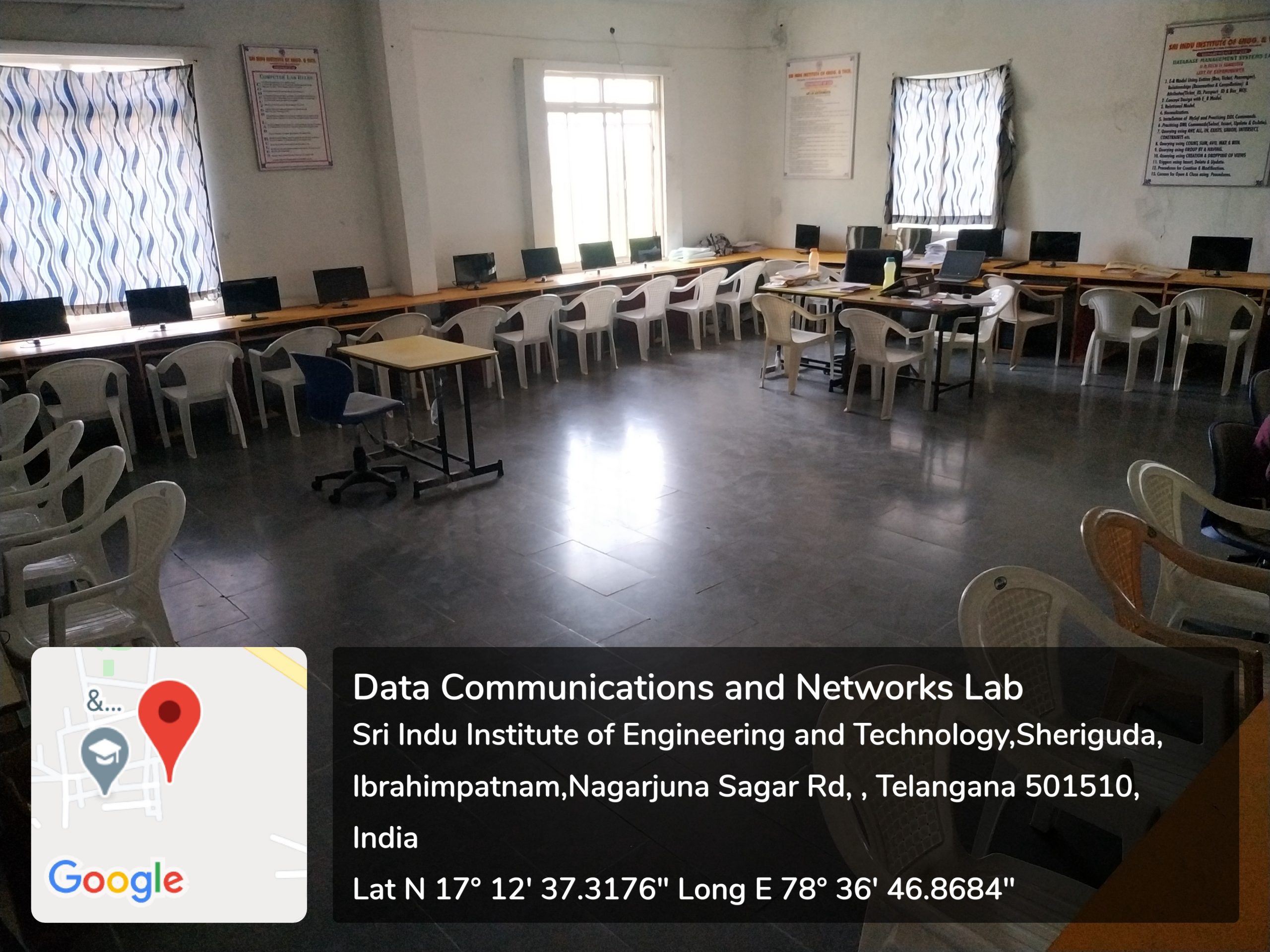
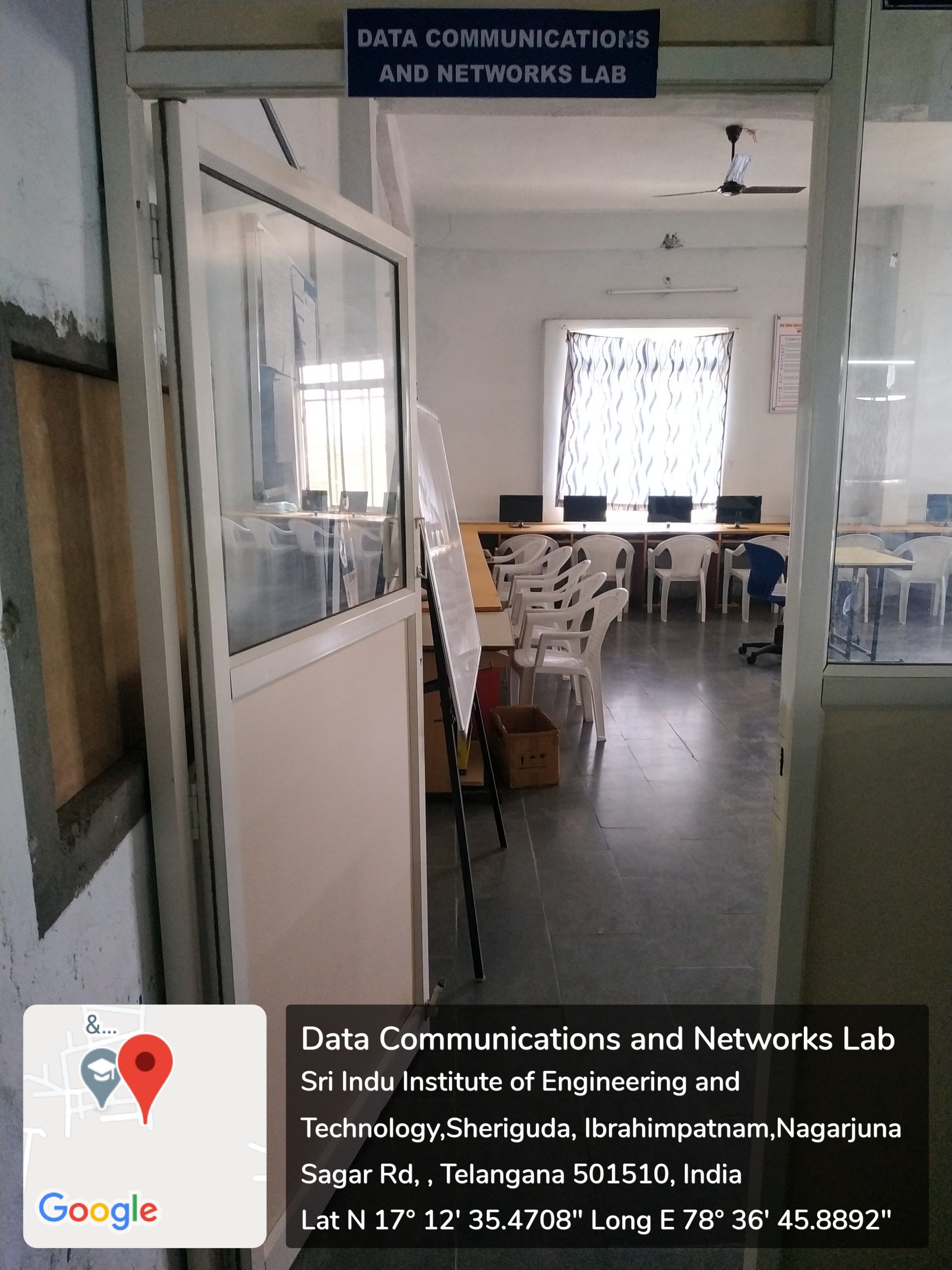
According to the present curriculum 3rd B.Tech I semester Advanced Communication Skills Lab prepares students for their careers by conducting debates, group discussions, mock interviews, oral presentations, writing letters sessions and drafting resumes. It also focuses on writing skills by having the students write projects/research proposals and technical reports. Students improve their professional and interpersonal communication in the globalized context.
The following course content to conduct the activities is prescribed for the Advanced English Communication Skills (AECS) Lab
- Activities on Fundamentals of Inter-personal Communication and Building Vocabulary - Starting a conversation – responding appropriately and relevantly – using the right body language – Role Play in different situations & Discourse Skills- using visuals - Synonyms and antonyms, word roots, one-word substitutes, prefixes and suffixes, study of word origin, business vocabulary, analogy, idioms and phrases, collocations & usage of vocabulary.
- Activities on Reading Comprehension – General Vs Local comprehension, reading for facts, guessing meanings from context, scanning, skimming, inferring meaning, critical reading& effective googling.
- Activities on Writing Skills – Structure and presentation of different types of writing – letter writing/Resume writing/ e-correspondence/Technical report writing/ – planning for writing – improving one’s writing.
- Activities on Presentation Skills – Oral presentations (individual and group) through JAM sessions/seminars/PPTs and written presentations through posters/projects/reports/ emails/ assignments etc.
- Activities on Group Discussion and Interview Skills – Dynamics of group discussion, intervention, summarizing, modulation of voice, body language, relevance, fluency and organization of ideas and rubrics for evaluation- Concept and process, pre-interview planning, opening strategies, answering strategies, interview through tele-conference & video-conference and Mock Interviews.
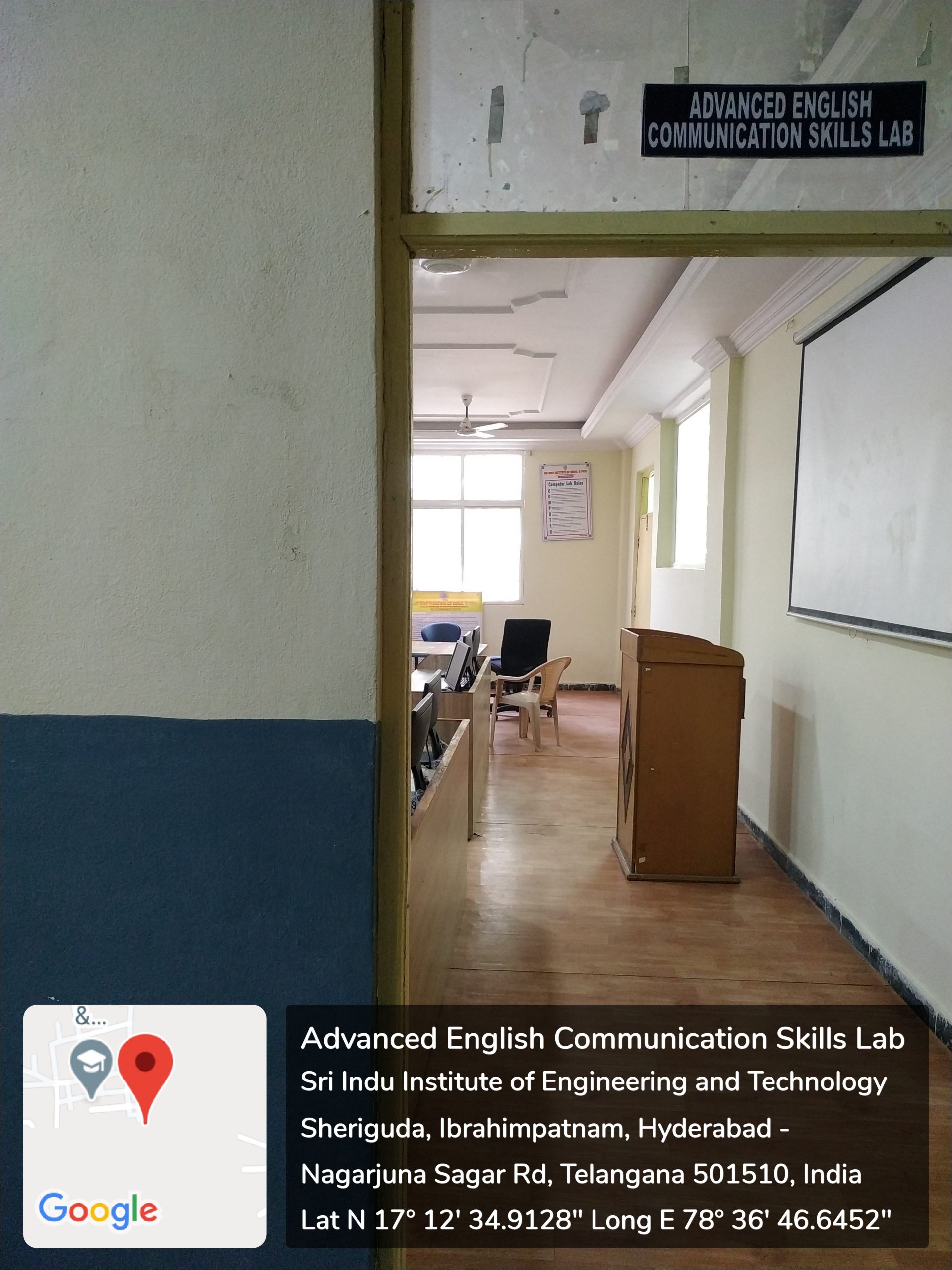
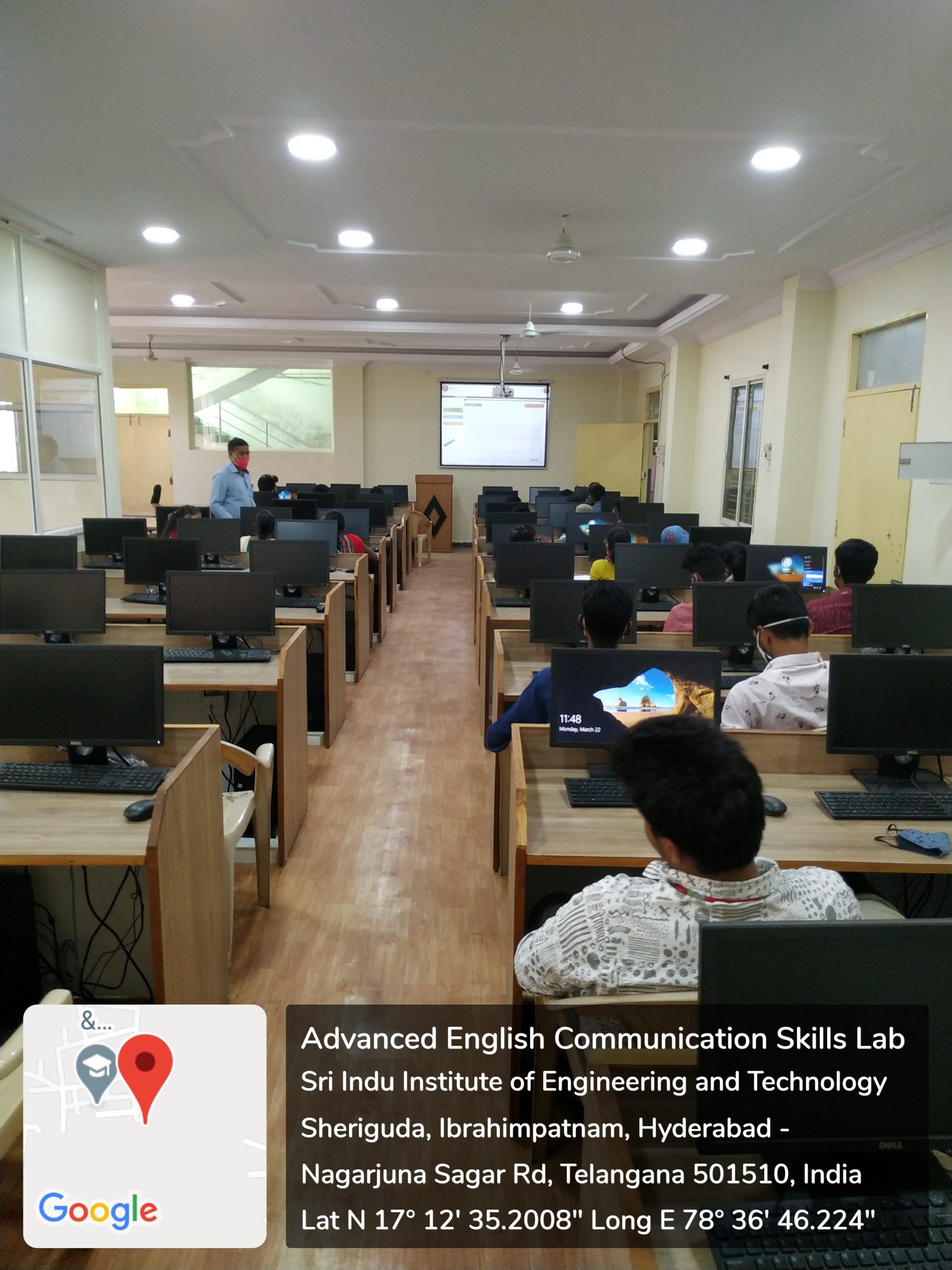
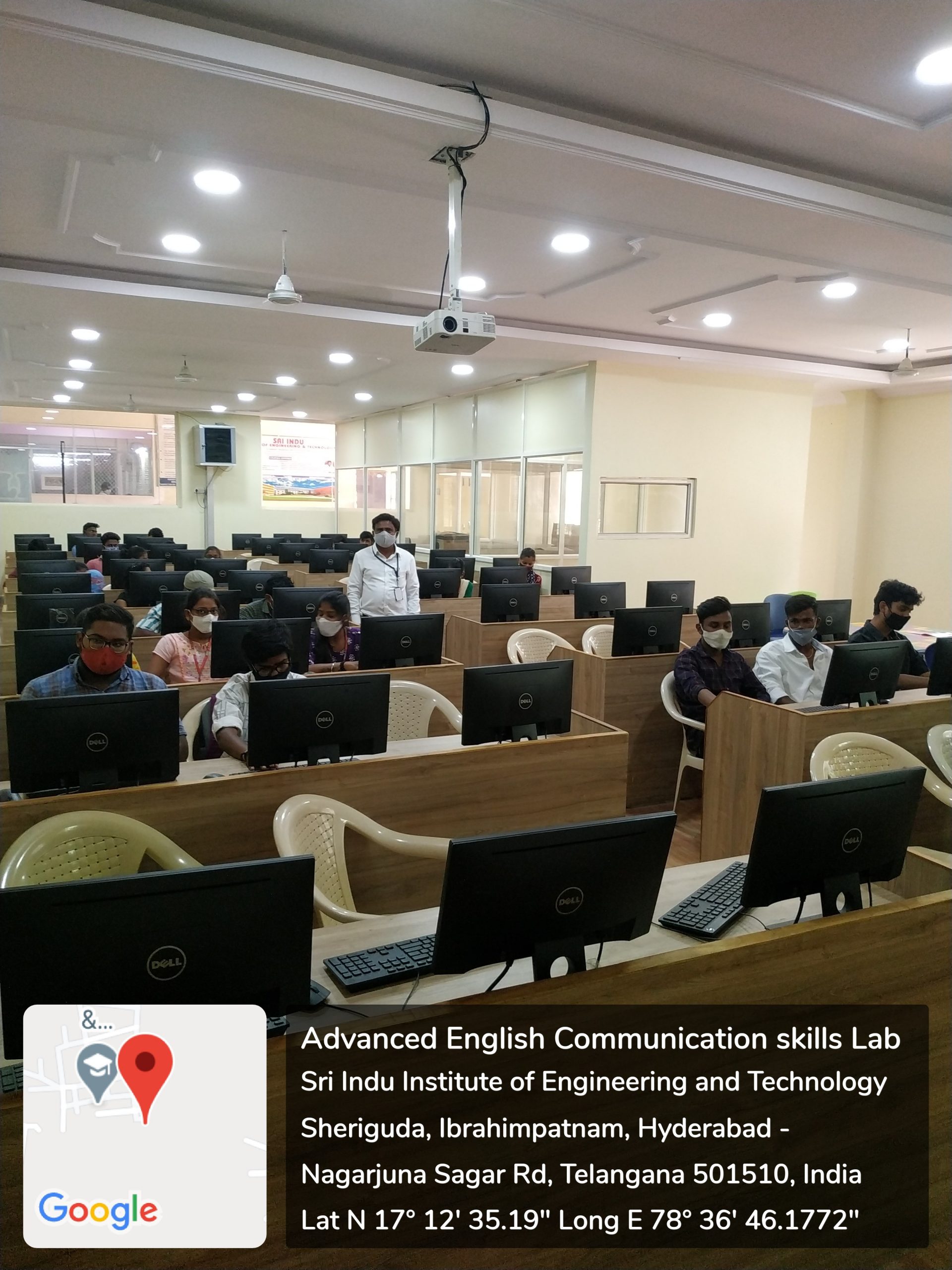
Labs for III Year II Semester
According to present curriculum3rd B-Tech 2nd Semester Students perform experiments in Digital Signal Processing Laboratory. This laboratory is used to understand the subject and develop the innovativeness through software based programming. The Digital Signal Processing Lab is based on Signal Processing Tool box in MATLAB which is used to do filter design and analysis, re-sampling, smoothing, power spectrum estimation. This laboratory is equipped with 30 numbers of PCs, with licensed software like MATLAB for simulation. To conduct value added course or video tutorial, facilities like LCD Projector. The courseware would also make the students familiar with some interesting experiments on Texas Instruments DSP kits.
The Programs shall be implemented in Software (Using MATLAB / Lab View / C Programming/ Equivalent) and Hardware (Using TI / Analog Devices / Motorola / Equivalent DSP processors).
Note
- Minimum of 12 experiments has to be conducted.
List of Experiments
- Generation of Sinusoidal Waveform / Signal based on Recursive Difference Equations
- Histogram of White Gaussian Noise and Uniformly Distributed Noise.
- To find DFT / IDFT of given DT Signal
- To find Frequency Response of a given System given in Transfer Function/ Differential equation form
- Obtain Fourier series coefficients by formula and using FET and compare for half sine wave.
- Implementation of FFT of given Sequence
- Determination of Power Spectrum of a given Signal(s).
- Implementation of LP FIR Filter for a given Sequence/Signal.
- Implementation of HP IIR Filter for a given Sequence/Signal
- Generation of Narrow Band Signal through Filtering
- Generation of DTMF Signals
- Implementation of Decimation Process
- Implementation of Interpolation Process
- Implementation of I/D Sampling Rate Converters
- Impulse Response of First order and Second Order Systems
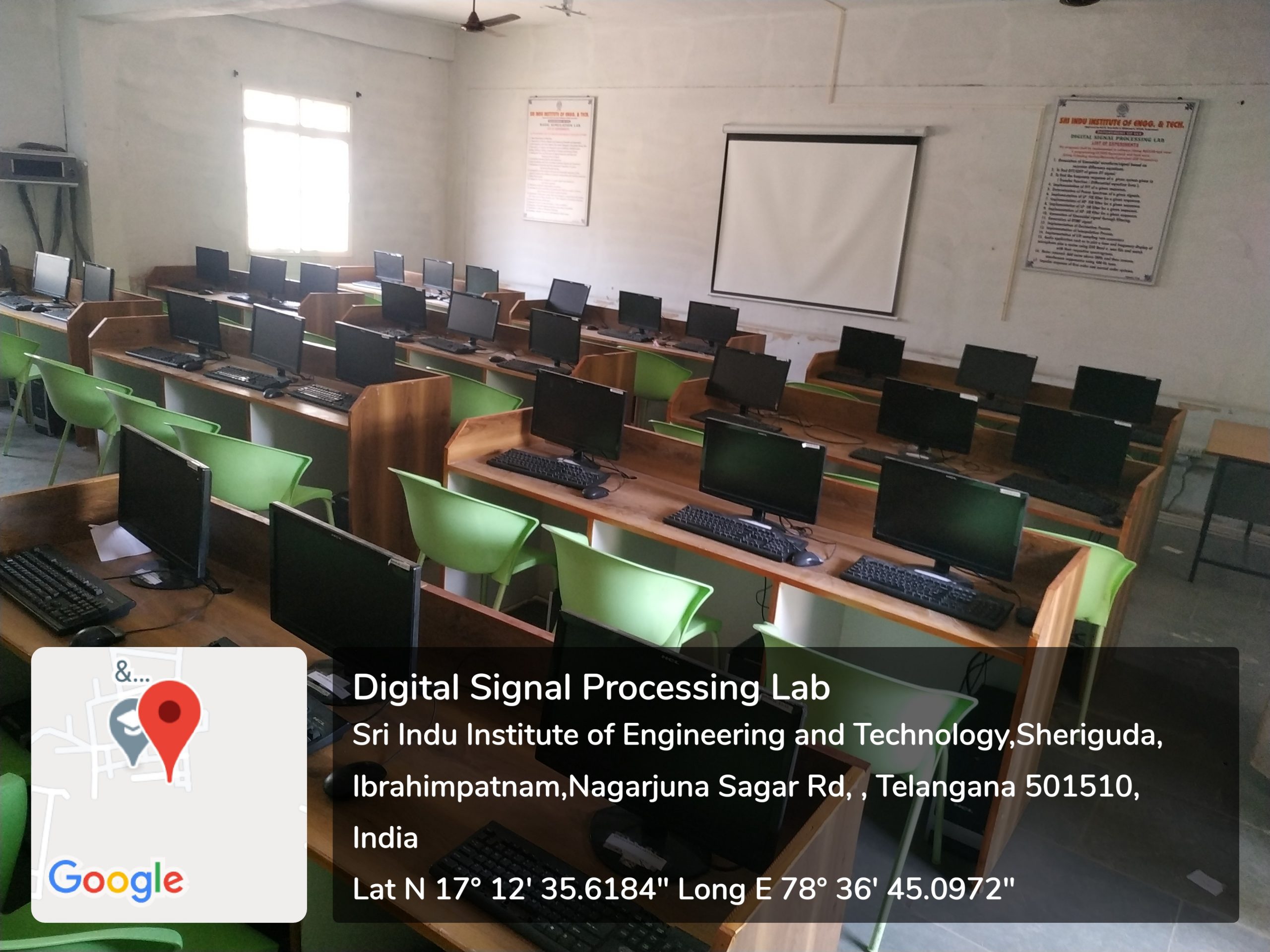
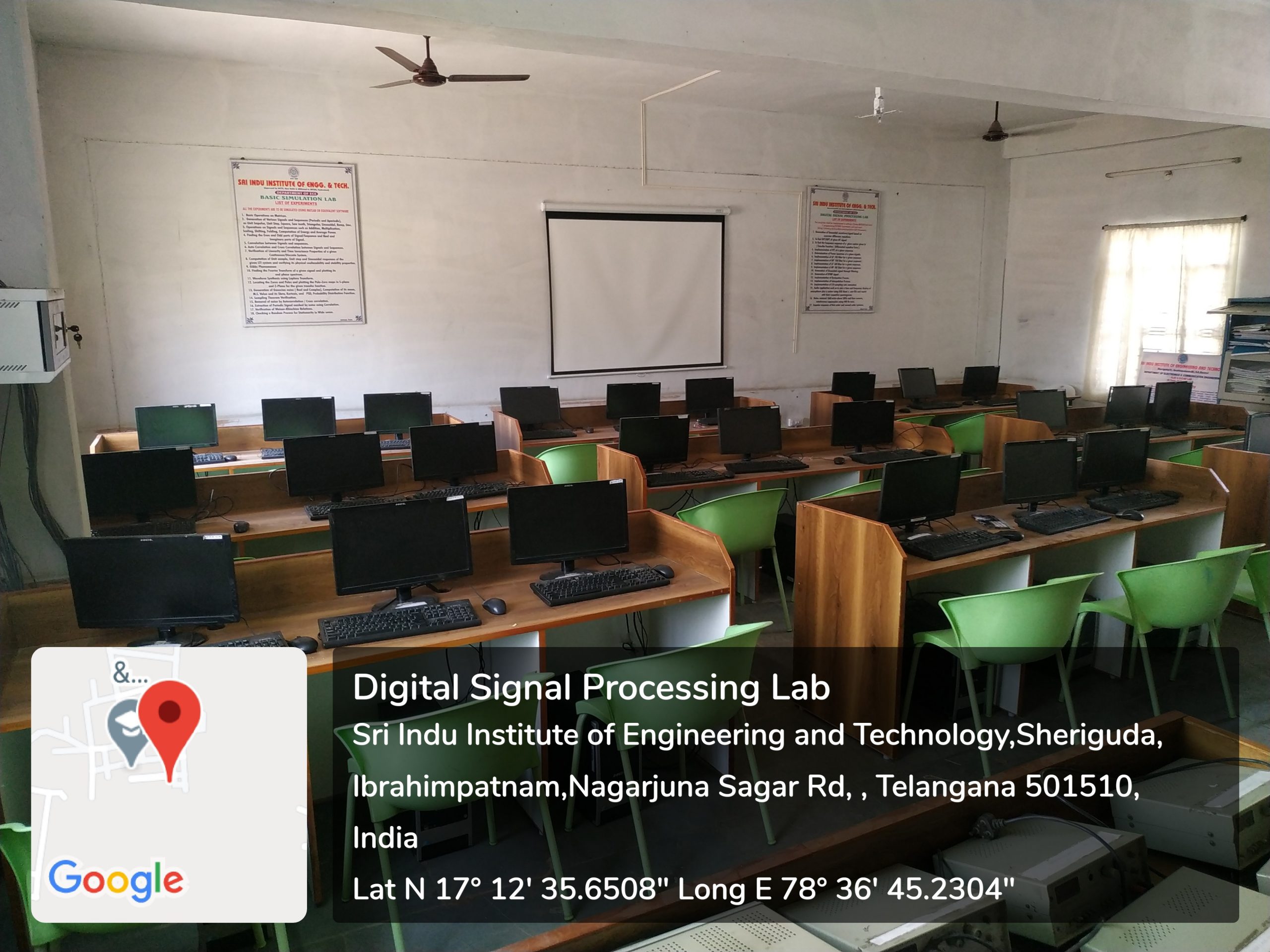
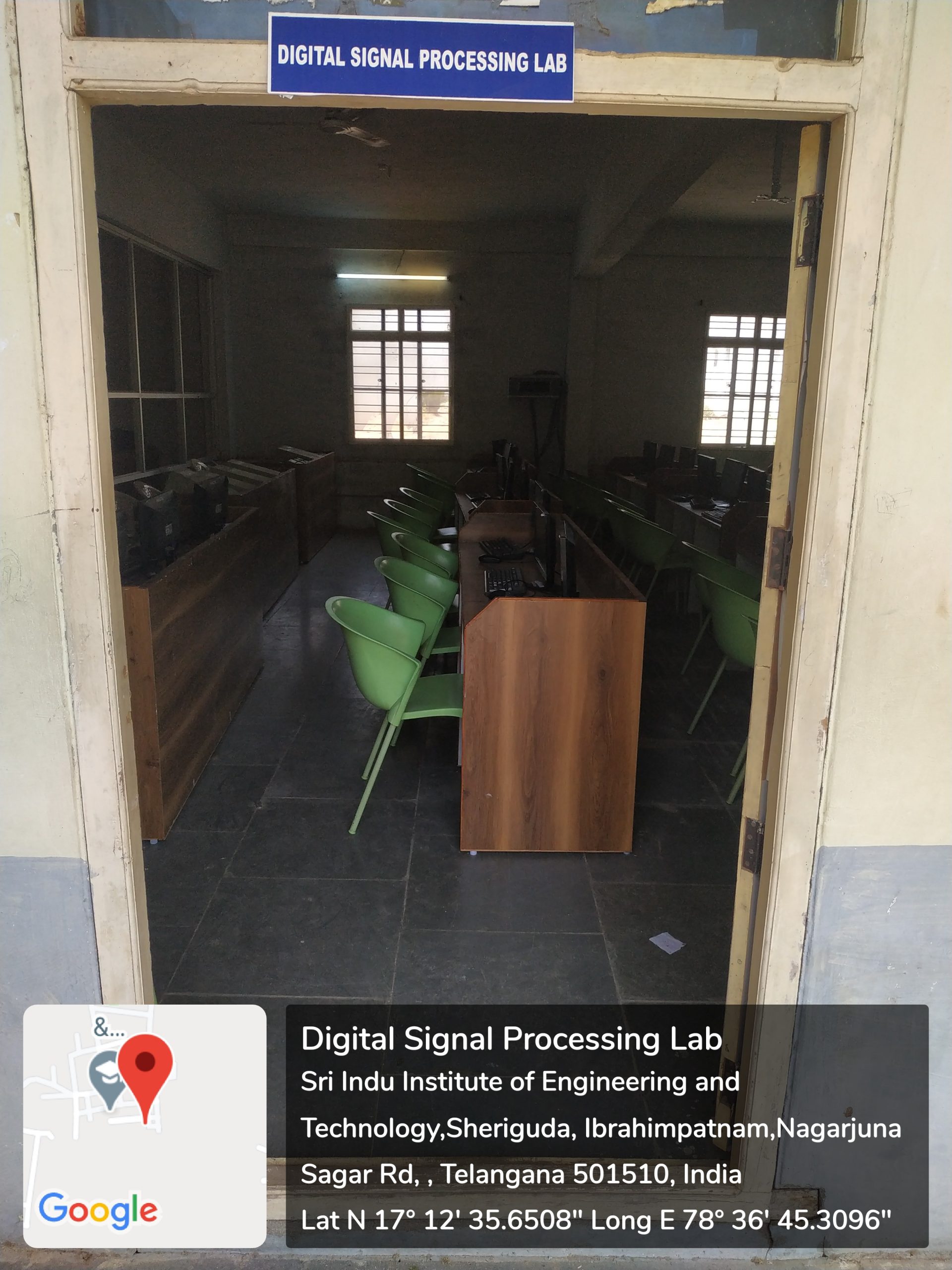
According to present curriculum 3rd B-Tech 2nd Semester Students perform experiments on e-CAD Laboratory. With these laboratory students can able to learn the HDL programming language & simulation of sequential circuits using programming language, synthesis and layouts of analog and digital CMOS circuits.
Design and implementation of CMOS digital/analog circuits are done by using Cadence /Mentor Graphics / Synopsys /Equivalent CAD tools. The design includes Gate-level design, Transistor-level design, Hierarchical design, Verilog HDL/VHDL design, Logic synthesis, Simulation and verification, Scaling of CMOS Inverter for different technologies.
e-CAD programs
Xilinx ISE System Edition 14.7 is used as CAD Simulation tool for VHDL Programs, and this programs are downloaded in to FPGA/CPLD boards and performance testing is done by using Pattern Generator.
Note
- Any SIX of the following experiments from each part are to be conducted (Total 12)
Part - I
All the following experiments have to be implemented using HDL
- Realize all the logic gates
- Design of 8-to-3 encoder (without and with priority) and 2-to-4 decoder
- Design of 8-to-1 multiplexer and 1-to-8 demultiplexer
- Design of 4 bit binary to gray code converter
- Design of 4 bit comparator
- Design of Full adder using 3 modeling styles
- Design of flip flops: SR, D, JK, T
- Design of 4-bit binary, BCD counters (synchronous/ asynchronous reset) or any sequence counter
- Finite State Machine Design
Part - II
Layout, physical verification, placement & route for complex design, static timing analysis, IR drop analysis and crosstalk analysis for the following
- Basic logic gates
- CMOS inverter
- CMOS NOR/ NAND gates
- CMOS XOR and MUX gates
- Static / Dynamic logic circuit (register cell)
- Latch
- Pass transistor
- Layout of any combinational circuit (complex CMOS logic gate).

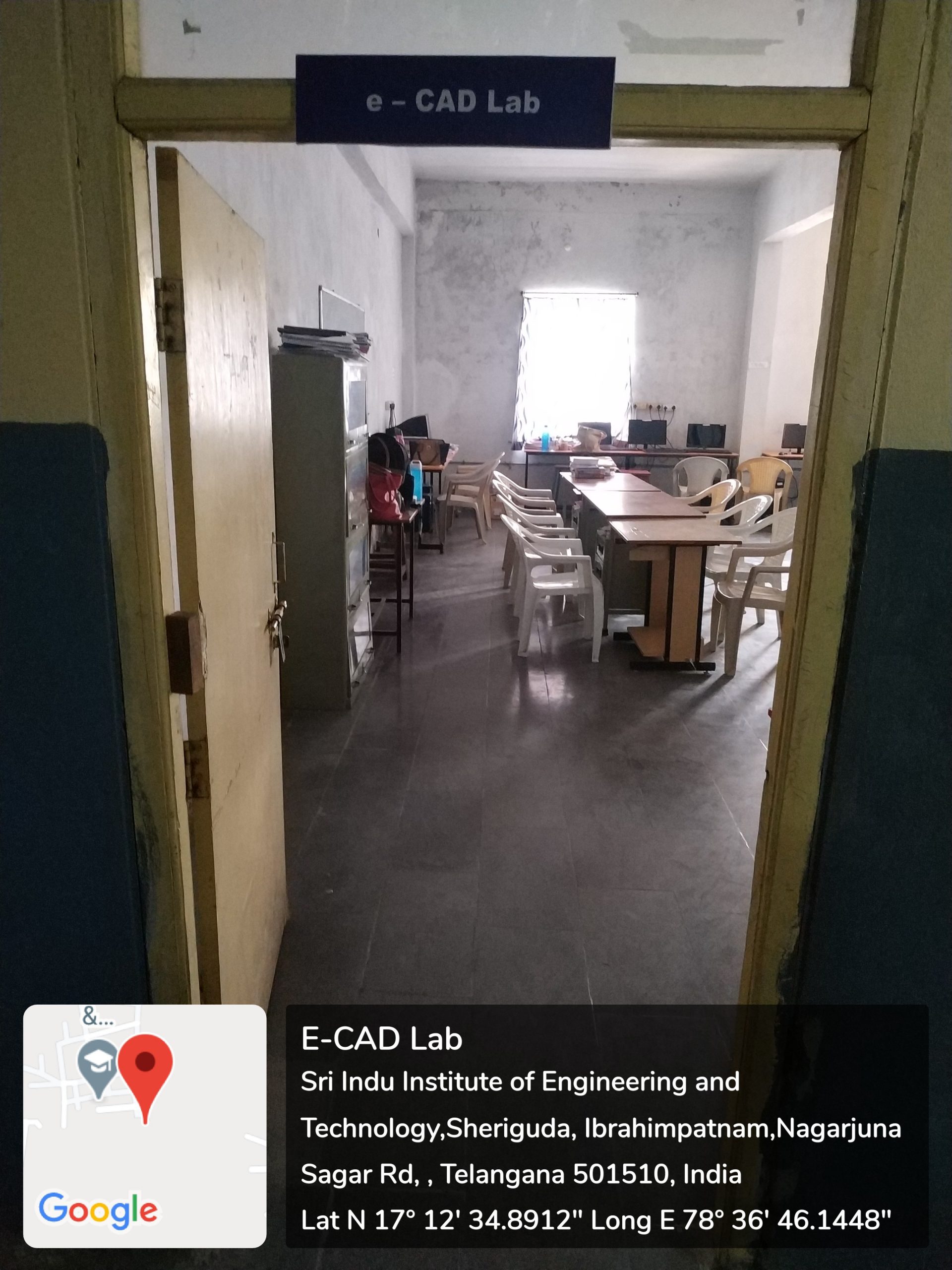
According to present curriculum 3rd year B.TECH 2nd semester students execute the programs in the scripting language lab. A scripting language is used to write scripts. These contain a series of commands that are interpreted one by one at runtime unlike programming languages that are compiled first before running. A scripting or script language is a programming language for a special run-time environment that automates the execution of tasks; the tasks could alternatively be executed one-by-one by a human operator. Scripting languages are often interpreted, rather than compiled.
Prerequisites
Any High-level programming language (C, C++)
Course Objectives
- To Understand the concepts of scripting languages for developing web-based projects
- To understand the applications the of Ruby, TCL, Perl scripting languages
Course Outcomes
- Ability to understand the differences between Scripting languages and programming languages
- Able to gain some fluency programming in Ruby, Perl, TCL
List of Experiments
All the following experiments have to be implemented using HDL
- Write a Ruby script to create a new string which is n copies of a given string where n is a nonnegative integer
- Write a Ruby script which accept the radius of a circle from the user and compute the parameter and area.
- Write a Ruby script which accept the user's first and last name and print them in reverse order with a space between them
- Write a Ruby script to accept a filename from the user print the extension of that
- Write a Ruby script to find the greatest of three numbers
- Write a Ruby script to print odd numbers from 10 to 1
- Write a Ruby scirpt to check two integers and return true if one of them is 20 otherwise return their sum
- Write a Ruby script to check two temperatures and return true if one is less than 0 and the other is greater than 100
- Write a Ruby script to print the elements of a given array
- Write a Ruby program to retrieve the total marks where subject name and marks of a student stored in a hash
- Write a TCL script to find the factorial of a number
- Write a TCL script that multiplies the numbers from 1 to 10
- Write a TCL script for Sorting a list using a comparison function
- Write a TCL script to
(i)create a list
(ii )append elements to the list
(iii)Traverse the list
(iv)Concatenate the list - Write a TCL script to comparing the file modified times.
- Write a TCL script to Copy a file and translate to native format.
- a) Write a Perl script to find the largest number among three numbers.
b) Write a Perl script to print the multiplication tables from 1-10 using subroutines.
- Write a Perl program to implement the following list of manipulating functions
a)Shift
b)Unshift
c) Push - a) Write a Perl script to substitute a word, with another word in a string.
b) Write a Perl script to validate IP address and email address. - Write a Perl script to print the file in reverse order using command line arguments
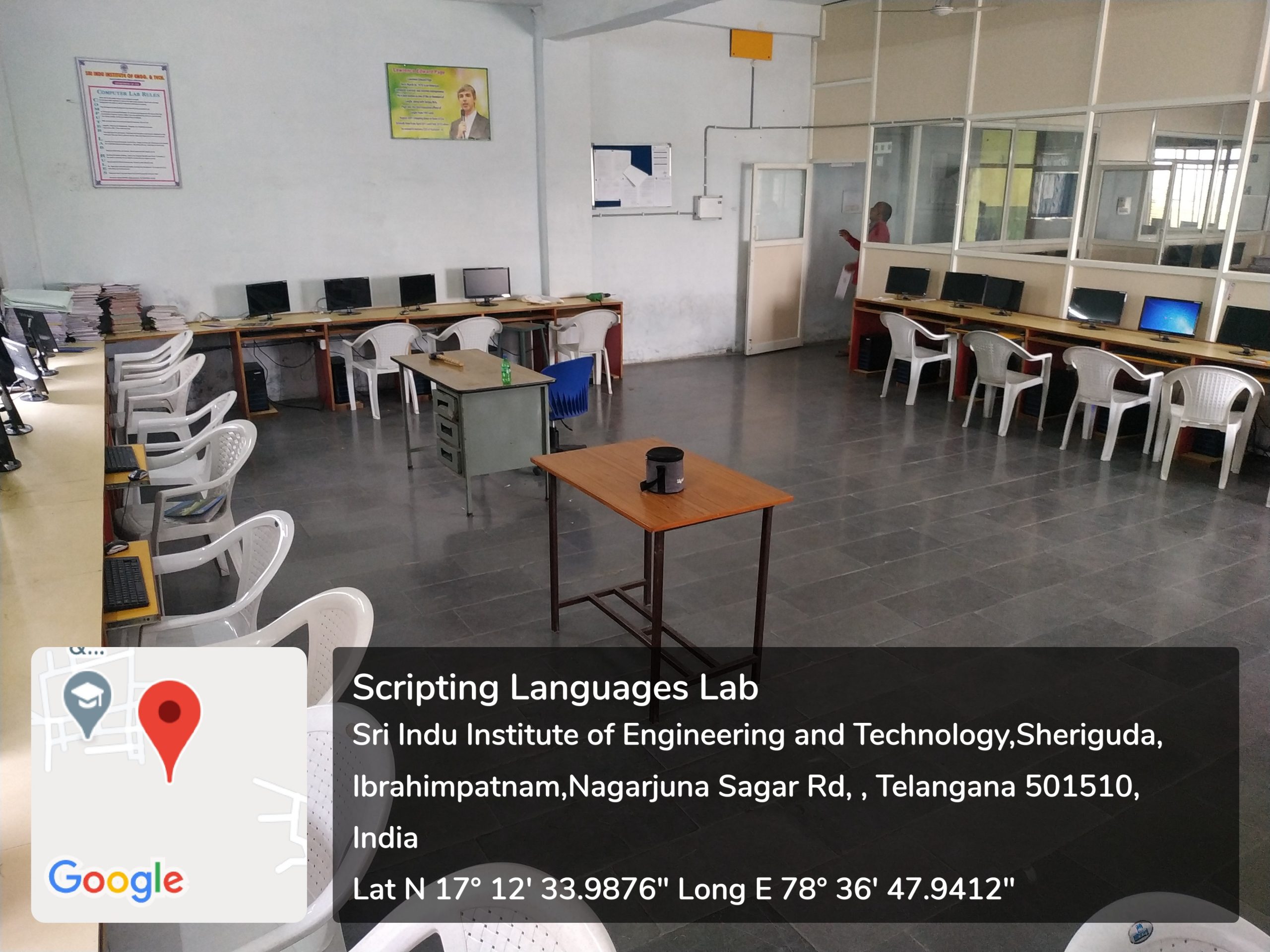
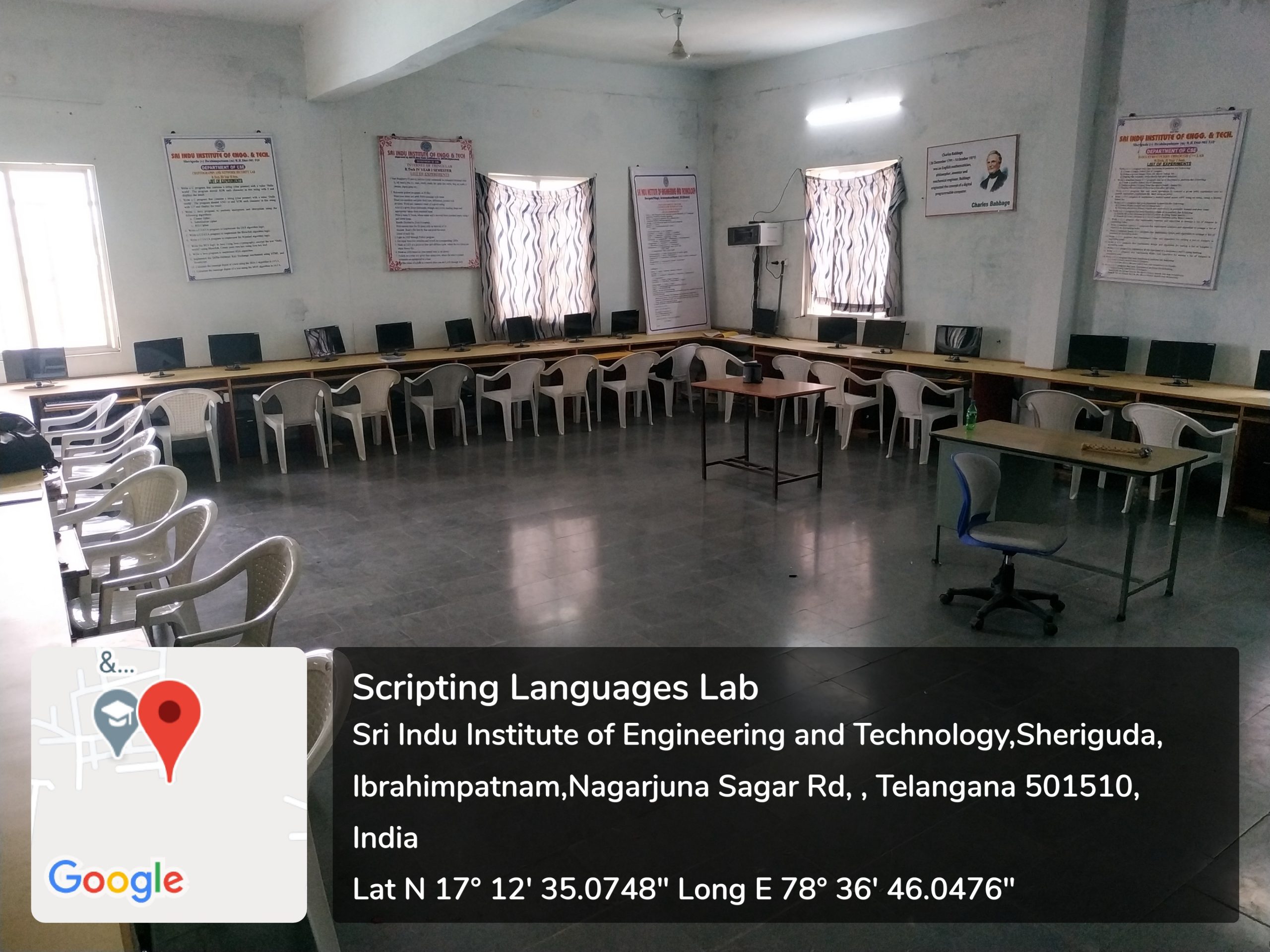
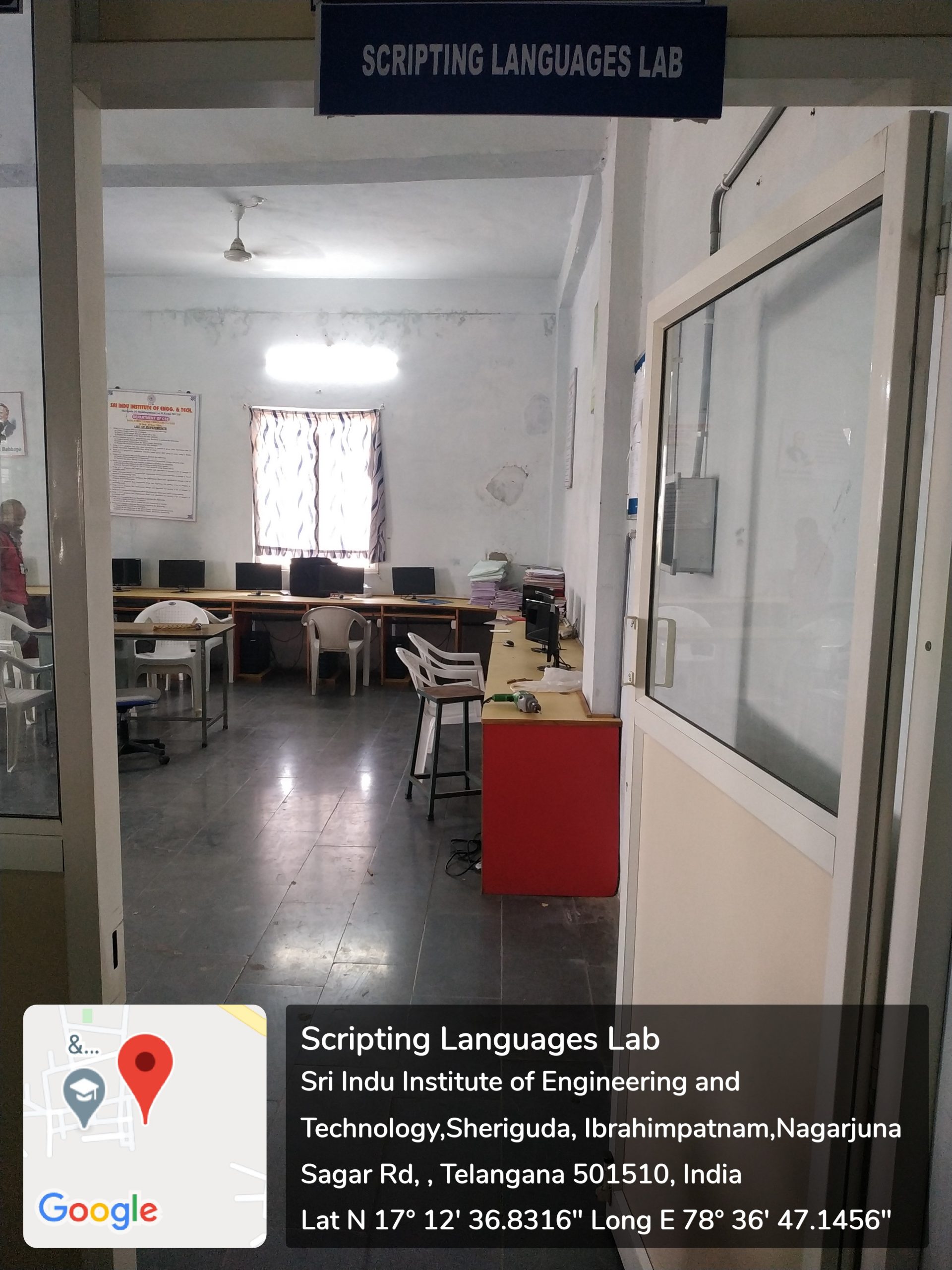
Labs for IV Year I Semester
General Information about the laboratory: According to present Curriculum IV B.Tech I semester students perform experiments on Microwave Engineering Laboratory. Microwave engineering laboratory provides deep knowledge about the Microwave components and in analyzing the microwave equipments. A key part of the microwave laboratory experience is to learn how to use microwave test equipment to make measurements of power, frequency, Attenuation, S parameters, SWR, return loss, and insertion loss. Scattering parameters of microwave components are defined and used to characterize devices and system behavior. Passive and active devices are commonly utilized in microwave sub systems and are also analyzed and studied. The students will have an understanding of the concepts involved in transmission and reception of the microwave signals, characteristics of components. Also students will gain in depth knowledge in the field of Microwave in order to apply the concepts learnt through theory and Laboratory in various applications to meet the needs to our society.
Note
- Any twelve of the following experiments
List of Experiments
- Reflex Klystron Characteristics.
- Gunn Diode Characteristics.
- Attenuation measurement
- Directional coupler Characteristics.
- Scattering parameters of wave guide components
- Frequency measurement.
- Impedance measurement
- VSWR measurement
- Characterization of LED
- Characterization of Laser Diode.
- Intensity modulation of Laser output through an optical fiber
- Measurement of Data rate for Digital Optical link
- Measurement of Numerical Aperture of fiber cable
- Measurement of losses for Optical link
